

THE SOUTH CAMPUS A GROUNDBREAKING EVENT THE NEXT SEISMIC SHIFT ARTIFICIAL INTELLIGENCE
GROUNDBREAKING JOURNEYS
ALUMNI MAKING A LASTING IMPACT
PIONEERING EDUCATION SPONSORED STUDY-TRAVEL PROGRAMS
FEATURES











THE SOUTH CAMPUS A GROUNDBREAKING EVENT THE NEXT SEISMIC SHIFT ARTIFICIAL INTELLIGENCE
GROUNDBREAKING JOURNEYS
ALUMNI MAKING A LASTING IMPACT
PIONEERING EDUCATION SPONSORED STUDY-TRAVEL PROGRAMS








When we began brainstorming on this edition of the magazine, it was in anticipation of the final approval of the South Campus. We had a vision of sharing photos of the groundbreaking and centering the magazine around a theme of innovation and “newness.” In October, we officially broke ground on the South Campus, and are excitedly watching the transformation of that space. In these early days, the evolution seems rapid as the land is cleared to make way for new spaces and new futures.
As you will discover in the pages within, our various articles showcase transformation as well. From our amazing alumni— some of whom are working together in high-profile national careers and others who are bringing new life to our local communities—to how a disruptive technology like artificial intelligence is enabling our faculty to bring novel and generative ideas to education, broadly, and their curriculum, specifically; these pages offer fresh and revolutionary approaches.
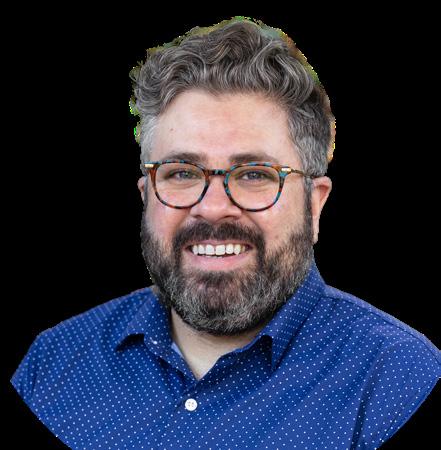

Covering other new ground, just after the publication of the last magazine, Johnny Avots-Smith joined the senior leadership team as our new Director of Advancement. Johnny came to us from Letterform Archive, a modern art museum in San Francisco where he served as the Chief Financial and Development Officer, following an incredibly competitive nationwide search. He brings deep expertise, a fresh perspective, and feelings of joy and gratitude to Head-Royce School every day. I’ve loved having Johnny on the team!
Lastly, as we go to print, we are midway through a strategic planning process. While it is too early to share anything yet, I am excited about our direction and look forward to implementing a new plan next year that will pave the way for the next era in our growth as an institution.
Most sincerely,
 Rachel E. Skiffer HEAD OF SCHOOL
Rachel E. Skiffer HEAD OF SCHOOL


To kickstart the new school year, we treated parents and guardians to a festive evening of food and fun at Chabot Space and Science Center!

Middle and Upper Schoolers journeyed across California during our signature Fallout trips—off campus adventures by grade-level— to take part in activities that reinforce teamwork, instill confidence, foster resilience, and lay the groundwork for future collaboration and allyship.



Our annual fall festival brought the entire school community together for an evening of laughter and entertainment. The fun games and activities kept families busy, while helping Upper School students raise money to support their clubs and affinity groups.
To deepen our sense of belonging, students in the Latinos Unidos Upper School Affinity Group read stories celebrating their heritage to Lower School classrooms. In the Middle School, Ms. Moreno’s Spanish classes embellished the hallway with murals and banners highlighting Latinx role models from different times and places.


Carla Marie and Desiree Muñoz—the Ohlone Sisters from the Costanoan-Rumsen Carmel Tribe—shared their traditions and celebrations, including an interactive land acknowledgment, Ohlone Dance (Mother Earth), and the Ohlone Acorn Harvest with Lower School students.

AUTHOR MAT HEAGERTY ON CAMPUS
Mat Heagerty, graphic novel author and university adjunct professor, visited the Lower and Middle School to highlight the gifts of being neurodivergent, his artistic process, and creating neurodivergent characters in his graphic stories.

Head-Royce showed up with pride at this year’s Oakland Pride Parade, making it an unforgettable experience for all the students, families, and professional community involved.

Nothing says autumn like our traditional Harvest Week! Lower School students always enjoy pressing apples into cider, one of the tastiest activities of the program.
After 10+ years, hundreds of donations, and tireless hours by people both within and outside of the community, we finally broke ground on the South Campus. Current and former students, parents, staff, trustees, school heads, and even Tuffy helped us mark the day with shovels in the dirt! Read more on page 22.
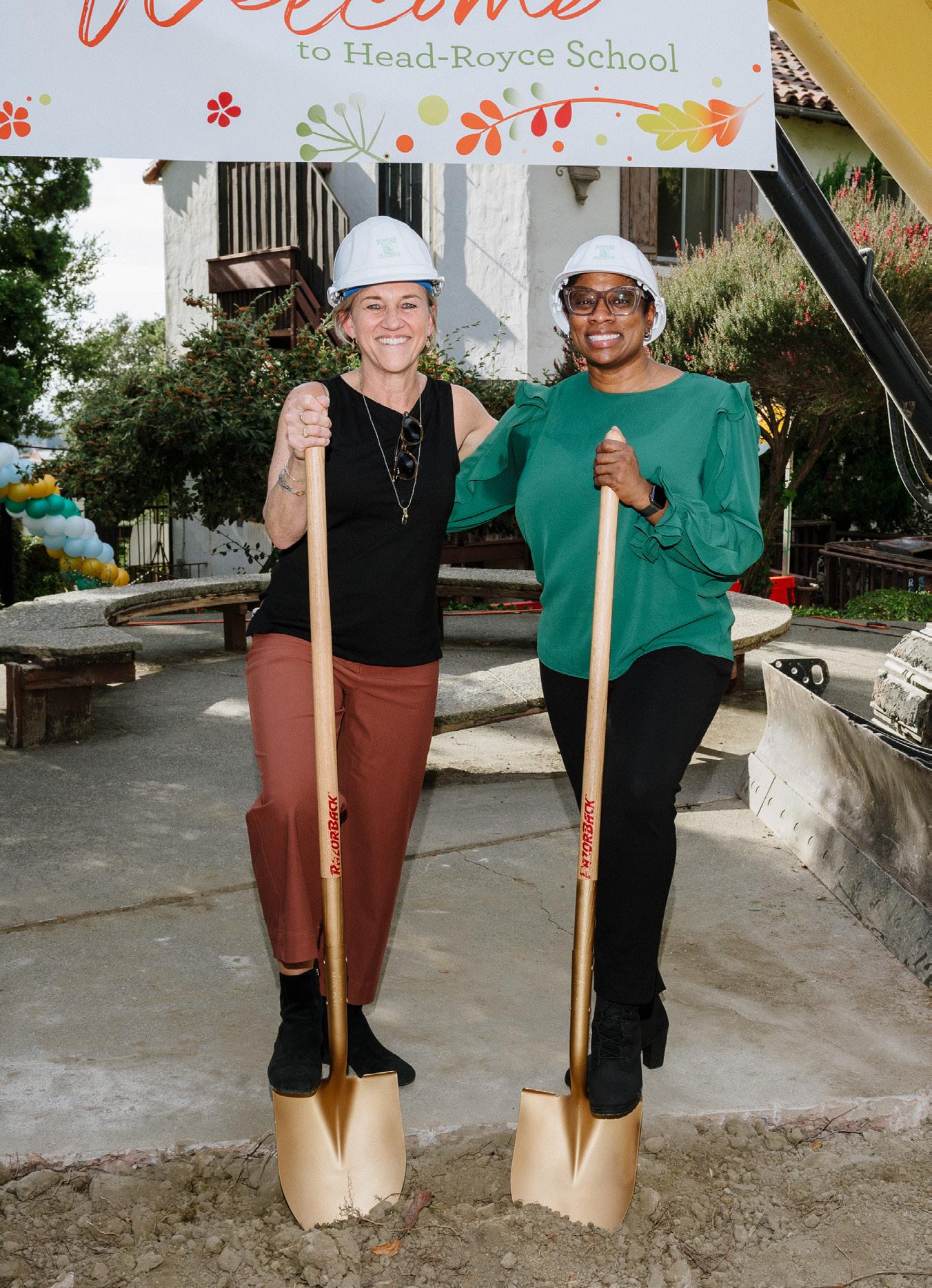
Sixth grade students embarked on an engineering design challenge to build boats using found materials, culminating in a race across the campus pool, propelled by “manmade wind.”

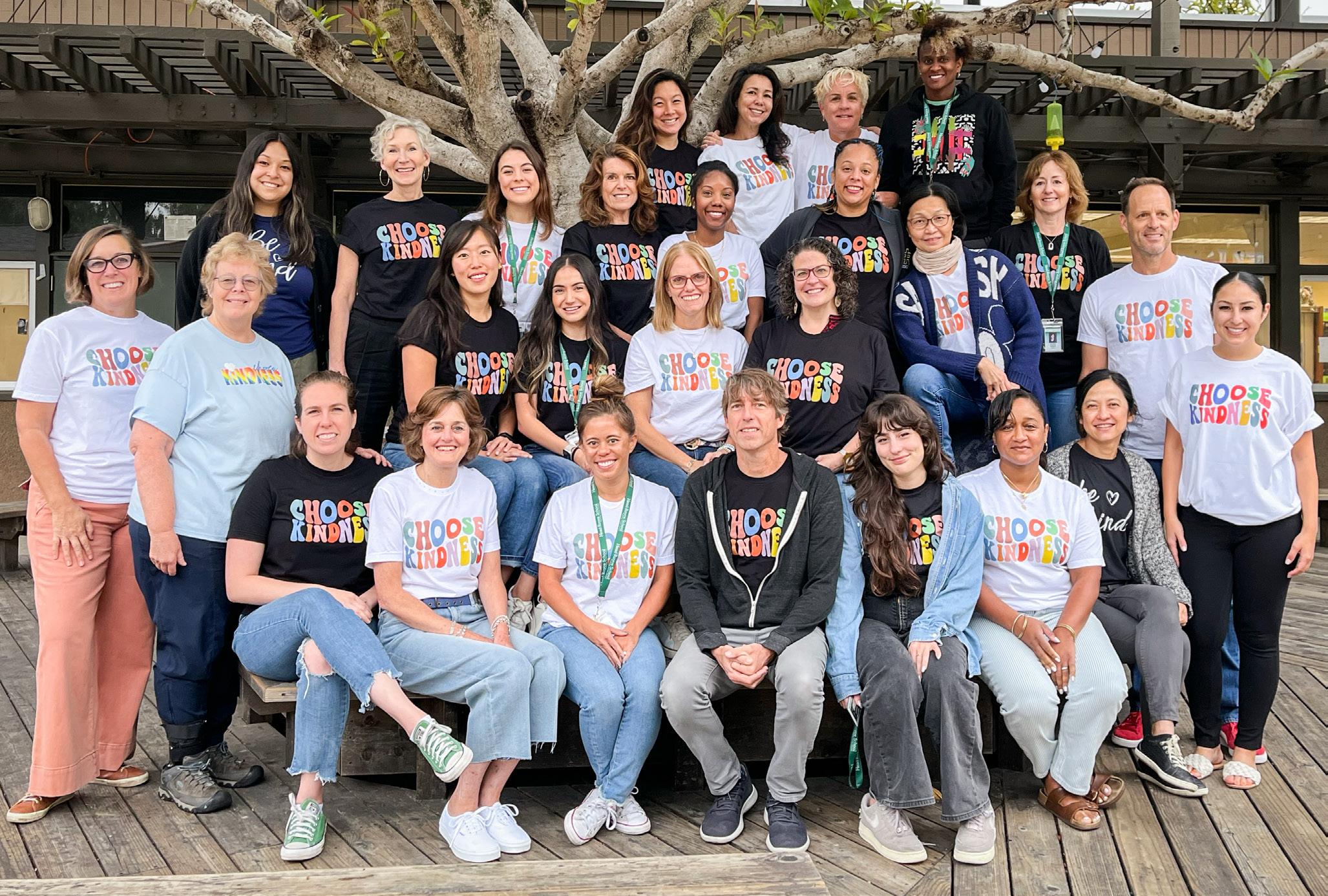
Head-Royce embarked on an all-school 21-Day Kindness Challenge—an activity championed by Lower School faculty—following daily prompts to spread warmth and care, bringing over 1,000 people together with the common purpose of practicing kindness.
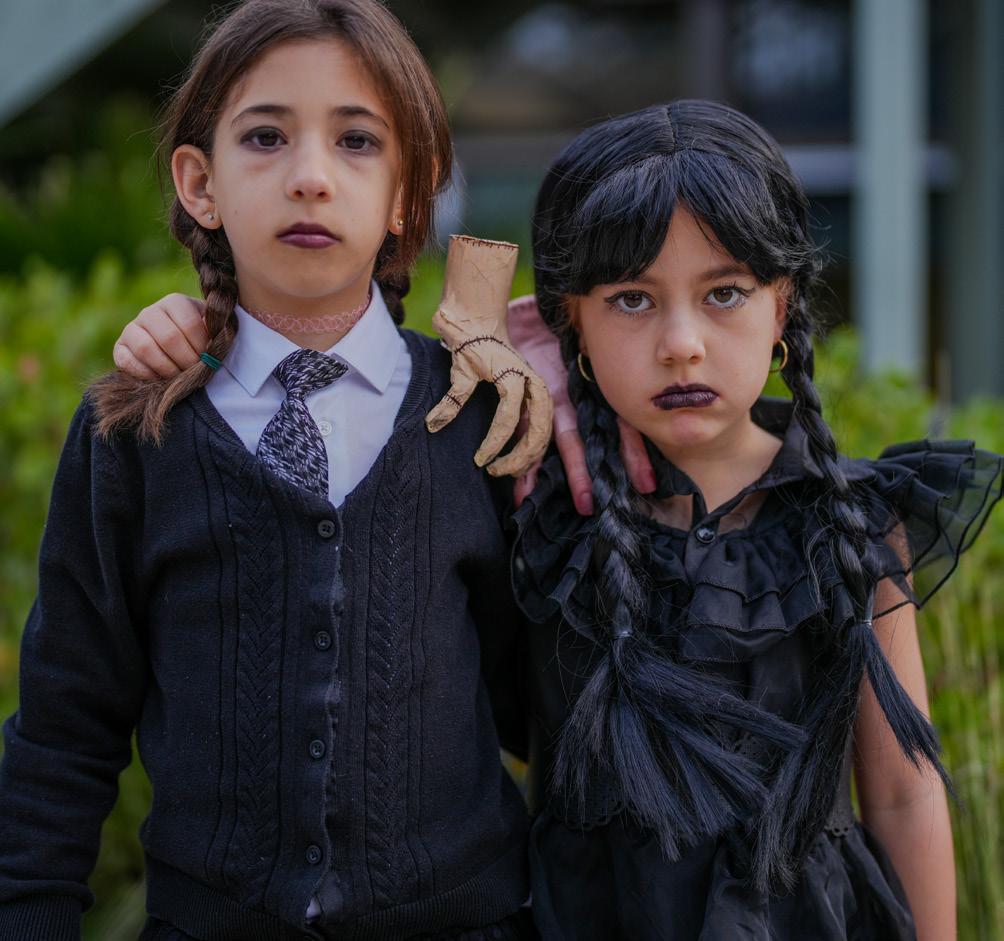

Showcasing creatures, creations, and even some foodie costumes from across the entire school community, the annual Halloween Parade is—at its heart—a joyful exhibition of the spirit of creativity and individuality.


Blending tradition with creativity, we celebrated and honored Día de los Muertos with enchanting storytelling, intricate facepainting, and colorful, heartfelt ofrendas celebrating the lives of those who we hold dear—but are no longer with us.
Splashing in the creek is always fun, and when done in the name of science, it is even better! As a part of their geology unit, 2nd graders collected physical data from the local Sausal Creek watershed to measure depth, width, and temperature.

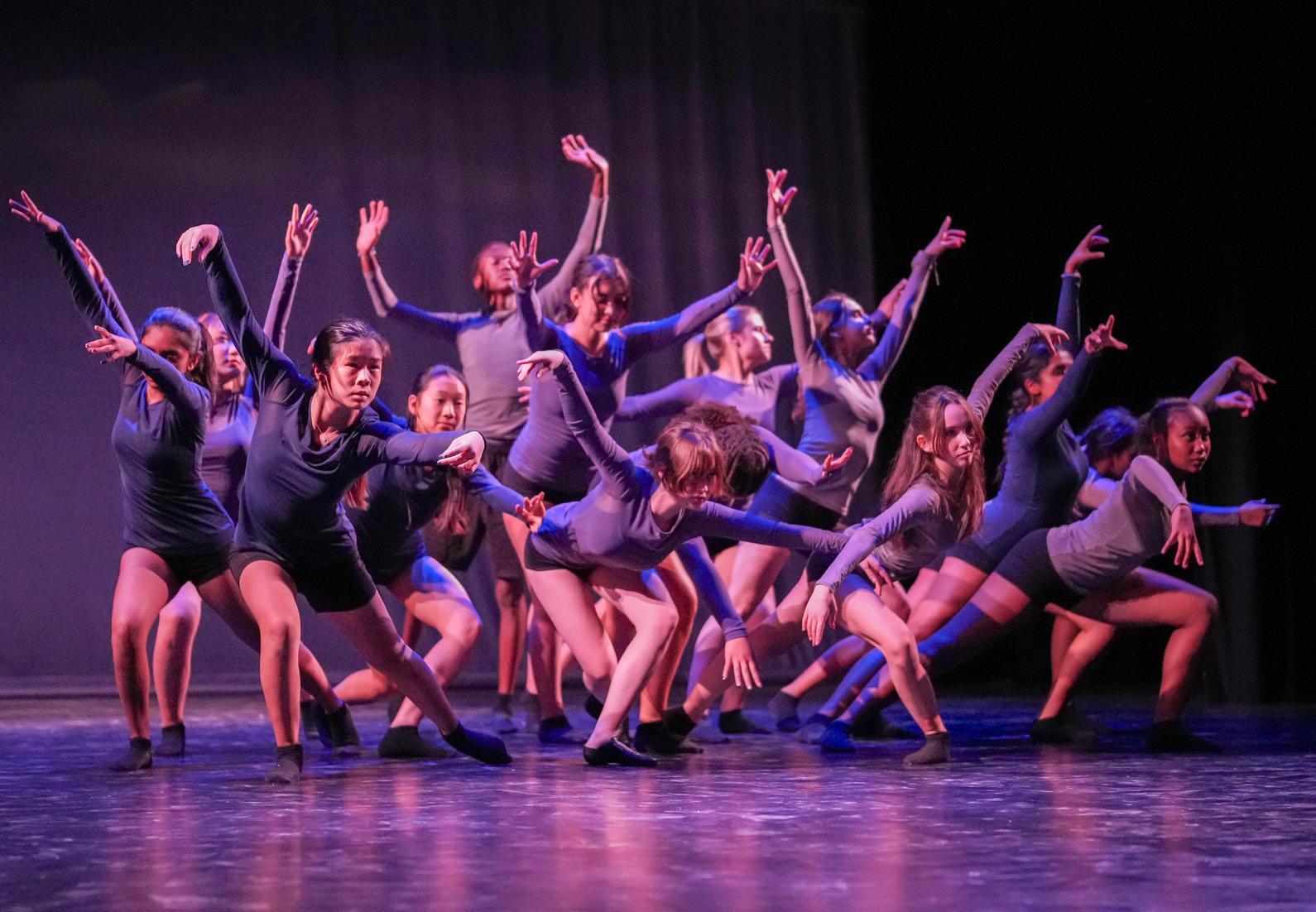
Upper School students in all levels of vocal music, instrumental music, and dance classes wowed the audience during A Season to Turn, the fall concert showcasing their first semester’s work.
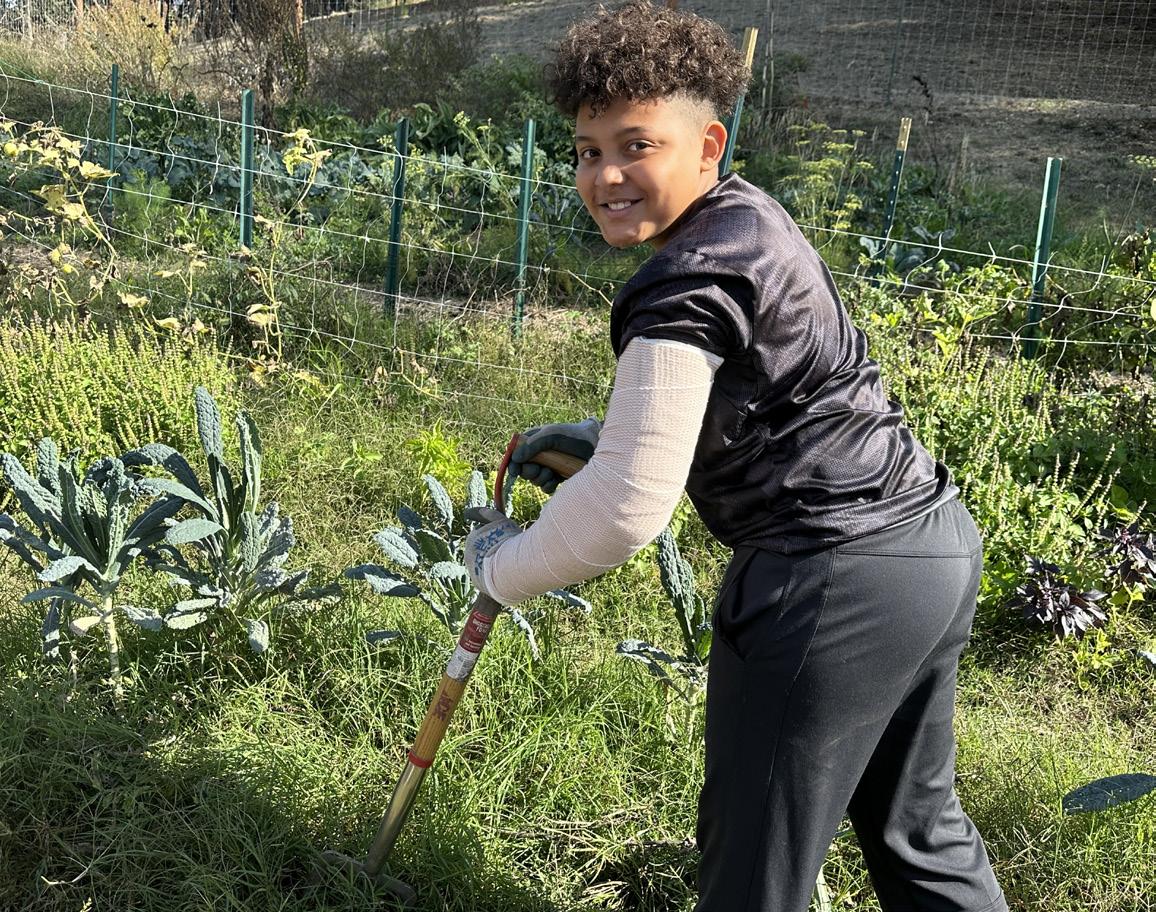
In partnership with the Head-Royce Center for Community Engagement, Middle Schoolers worked on curriculum-aligned, hands-on projects with local and global partner organizations and then reflected on the day, learning that purposeful action is a meaningful experience for everyone involved.


Konishiki Yasokichi, the first non-Japanese-born sumō champion, visited our 5th grade classrooms to share the cultural significance of sumō wrestling in Japan, not just as a sport, but as a way of life.
Ms. Chang’s 3rd grade class learned about staple foods—how they are prepared and served—with rice being a common component across many cultures.
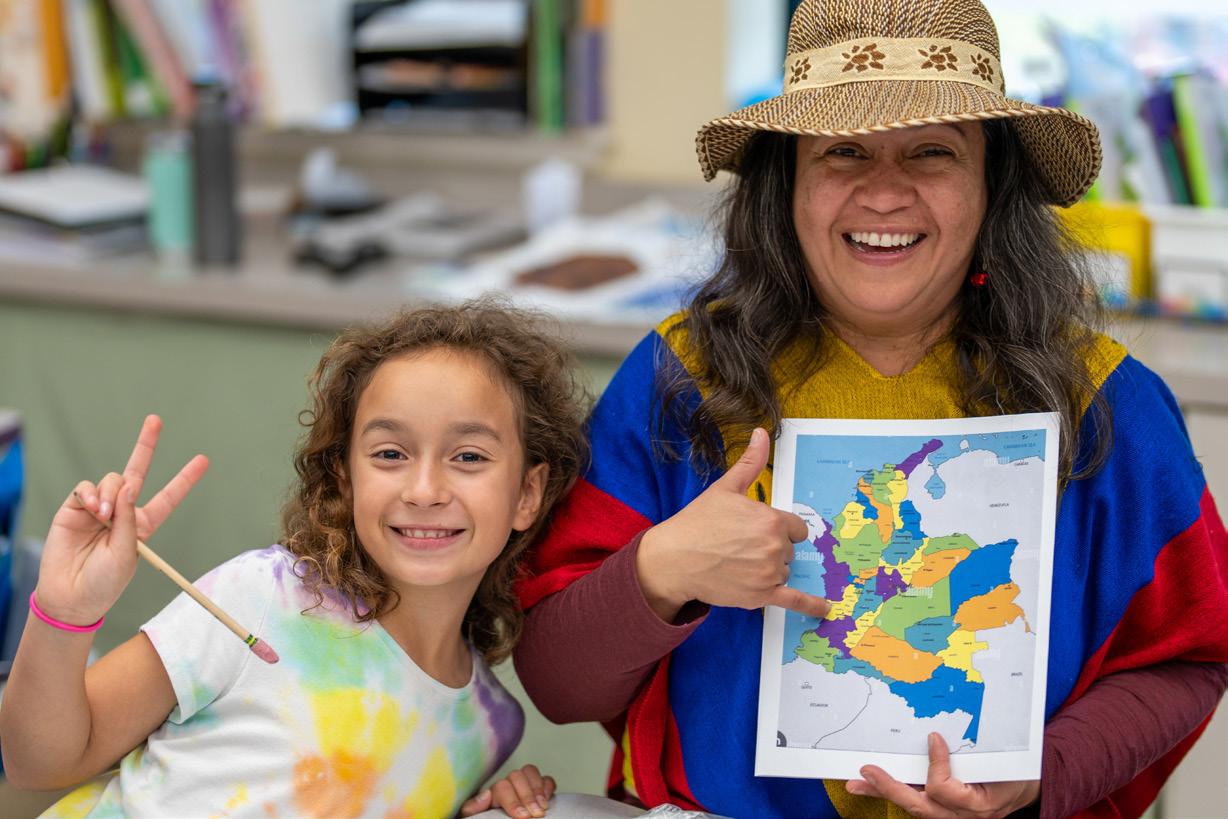
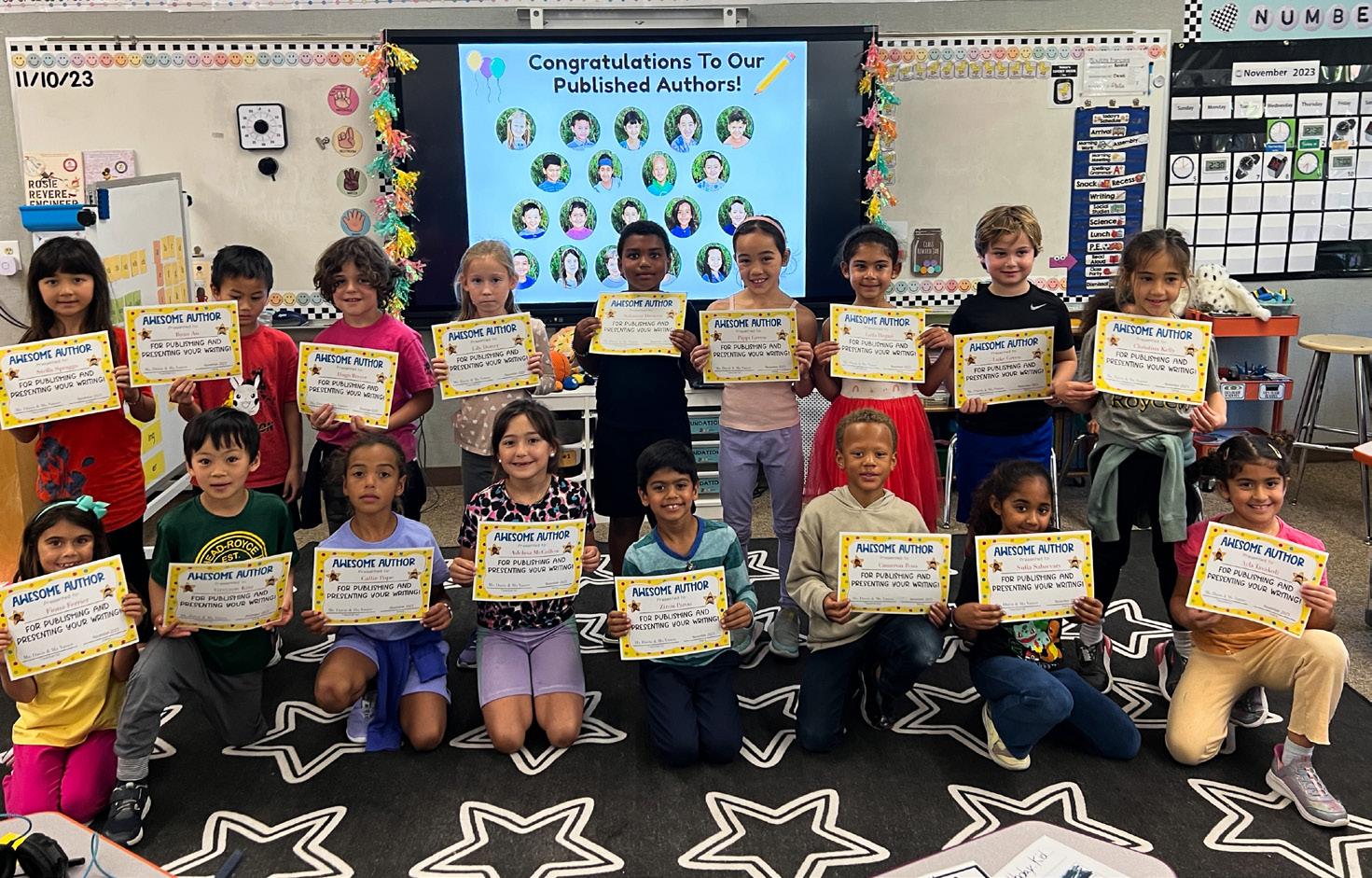
From broken arms to fun family vacations, 2nd graders published personal narratives both in written and audiobook format, with detailed accounts of some of the more memorable events in their young lives.
Nothing—not even the wet weather—could dampen the cheer and festive spirit our Colla Voce carolers brought to their performances both on and off campus!

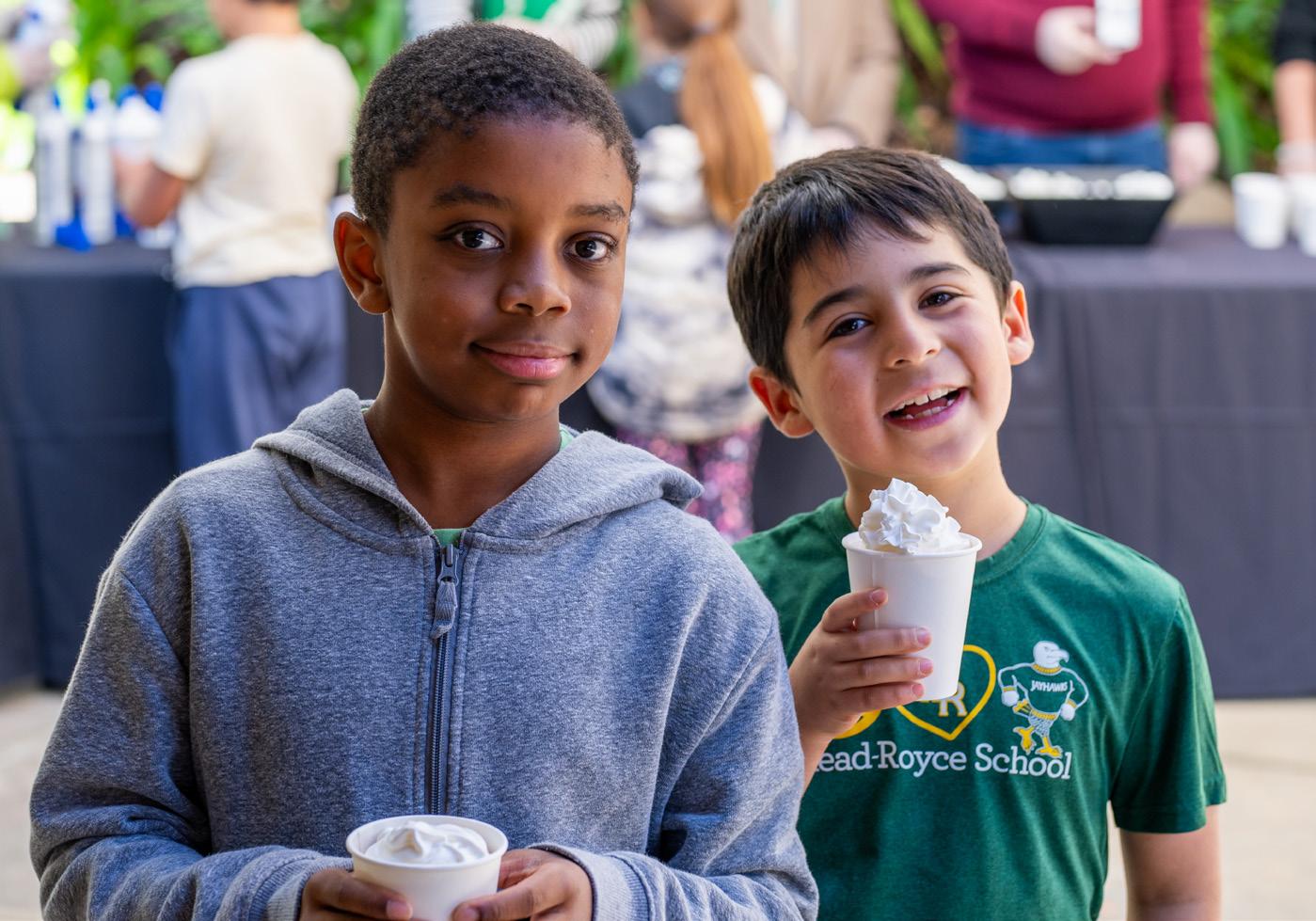
The Upper School’s swashbuckling fall musical production, Peter and the Starcatcher featured flying suitcases, an incredible set, and dazzling performances by a talented and hardworking cast of more than thirty students.
What’s better than one cocoa party? Two of course! While the 1st, 2nd, and 3rd graders enjoyed a well-deserved reward for having the highest participation during Givetober, Emily Miller’s Studio Art 8 Class also treated themselves to the delicious drink.



This year’s annual K-12 Holiday Program—Songs of Peace—was filled with festive music, vibrant choreography, and incredible arrangements expressing gratitude for the gifts the holiday season brings.
Did you like what you read?
Most of the stories included in this Life@ section are shared weekly in our Instagram and Facebook accounts. Follow us to see more photos and videos!
Three of our Upper School Robohawks teams competed in this year’s fifth annual WAVE competition at Worcester Polytechnic Institute in Massachusetts, with team 8000B making it to quarterfinals and 8000C advancing to the semi-finals!.

Our inaugural Holiday Art Contest was a great success with dozens of submissions from all three divisions. The winning designs were featured on the Holiday Program (Alex M. ’32) and the digital holiday card (Kate W. ’28)!

Scan to see our animated holiday card, art by Kate W. ’28.

Scan to see our complete holiday program, art by Alex M. ’32.
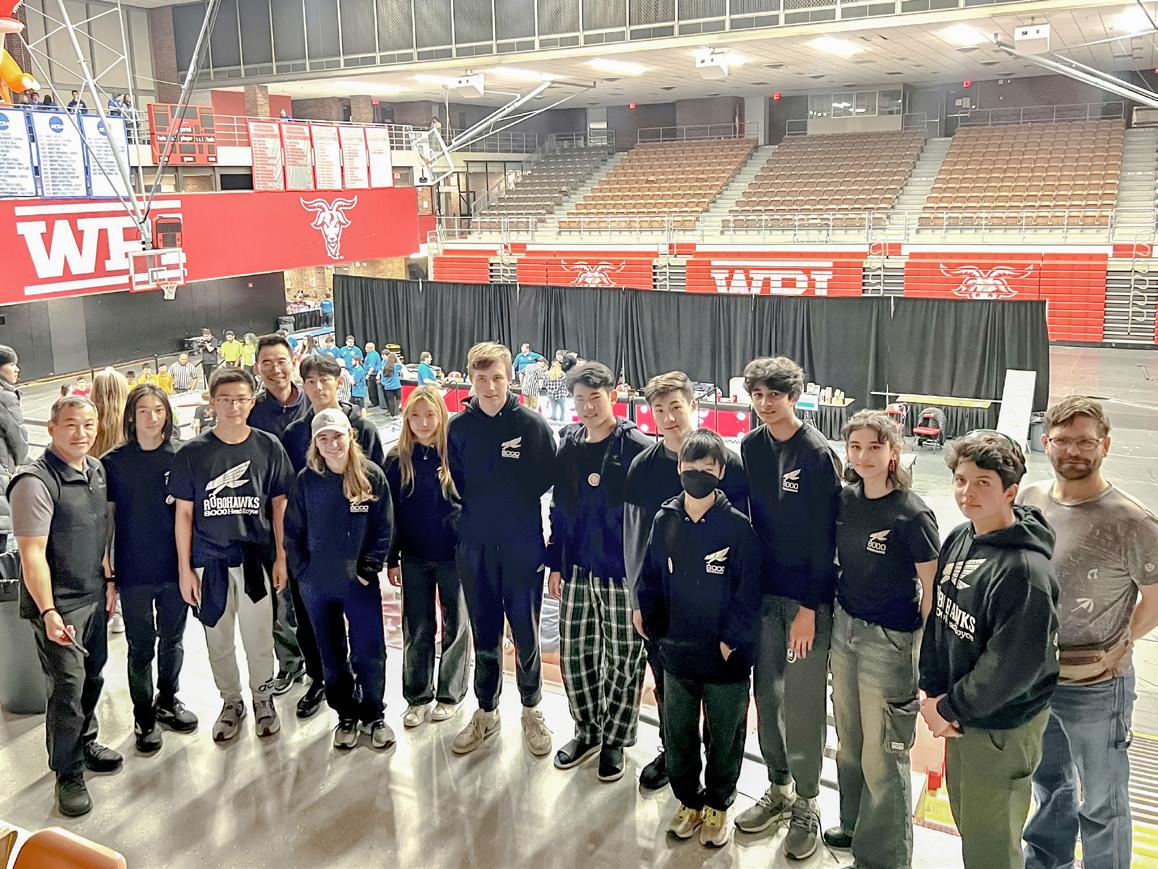
Ilan B. ’24 and Lucia P. ’25 won their fourth Alta Silver Black Invitation tournament ever, while Dhruva S. ’24 and Kaelie C. ’25 made it to the quarterfinals and ultimately claimed their first Tournament of Champions (ToC)!





Upper School Men’s and Women’s Cross Country teams both had a select group of runners advance to the NCS Division 5 championship meet, while the Middle School Girls Varsity Cross Country team secured the East Bay Middle School League Championship!


Men’s Soccer made it to the semi-finals in the NCS Division 1 Championship.

Women’s Tennis team won the BCL-East Championship.
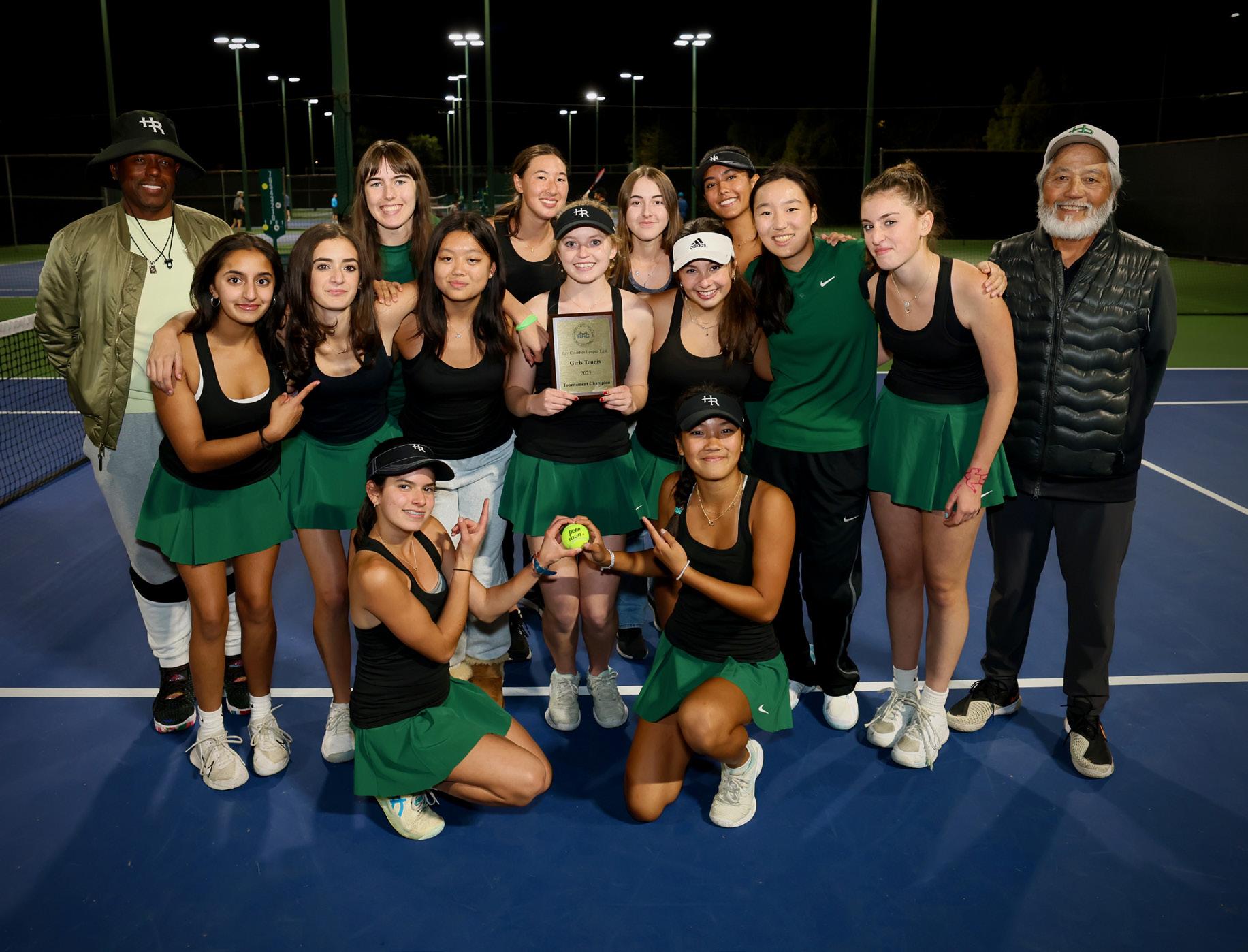
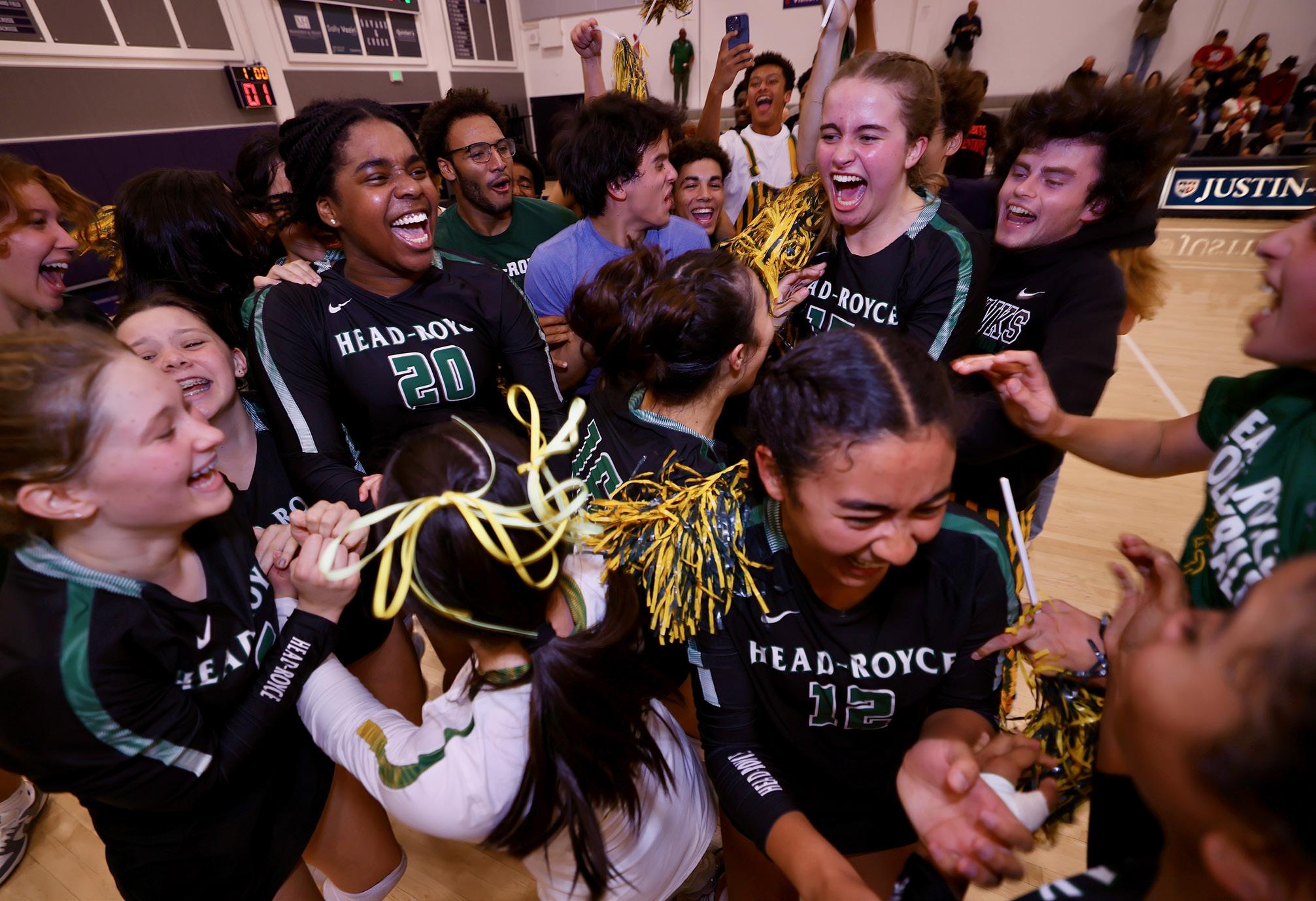
Women’s Volleyball won the BCL-East and NCS Division 4 Championships.



WHEN AUDREY V. ’24 WROTE a 2023 April Fool’s Day spoof in the student publication, The Hawk’s Eye, on the South Campus not opening until the year 3020 (no...that’s not a typo!), it was after over a decade of community-wide anticipation. While written in good fun, there were shreds of truth in her words. Audrey first heard about the project shortly after coming to the school in 7th grade. “I remember an assembly where there was a presentation on the ‘Road to 2020’ [strategic plan] and I recall being excited about the idea of utilizing the South Campus in high school.”
But after numerous delays, Audrey admits that it “definitely made me less excited once I realized it wouldn’t happen while I’m still here.” She’s not alone. Adds Matthew W. ’24, “Once the pandemic hit when I was in 8th grade and construction still hadn’t started, I sort of figured our grade [class] wouldn’t be around for the South Campus. I’m sure Head-Royce did everything they could to break ground as soon as possible…but I can’t help but wish it was constructed earlier so that our grade [class] would be able
to experience it for at least a year.”
Today’s seniors were in 1st grade when the school was presented with a chance to purchase the land from Lincoln Child Center (now known as Lincoln Families). Acquiring eight acres adjacent to the existing campus was an unheard of opportunity—one that Head-Royce quickly seized. It would be the last quick thing on the South Campus journey.
 V.’s
V.’s
renovation of certain buildings, demolition of others, and construction of new spaces. In late December 2018, the school submitted its official building plan centered on four key elements: additional classroom space with stateof-the-art STEM labs to support handson learning and multi-disciplinary exploration; an eight-acre educational greenbelt with outdoor spaces for small group work, collaborative learning, and reflection; an integrated infrastructure, including a new Loop Driveway and pedestrian tunnel, easing Lincoln Avenue traffic and increasing safety; and
While the specifics have changed over time, the vision always included outdoor learning gardens, the renovation of certain buildings, demolition of others, and construction of new spaces.
Head-Royce officially purchased the property in February 2013. Over the next five years, the school selected project partners and held many meetings with employees, neighbors, city officials, consultants/experts, parents, and students…and the future of the South Campus slowly began to take shape.
While the specifics have changed over time, the vision always included outdoor learning gardens, the
a modern Performing Arts Center as a hub for artistic expression in support of Head-Royce’s whole child philosophy.
Over the next few years—despite the pandemic, which stalled much of the City’s support of the project—the school continued to see a flurry of activity around the South Campus. Preliminary drawings were generated, site inspections were conducted, feasibility studies were created, budgets were
estimated and refined, paperwork was submitted, and much more was done to move the project forward, including the launch of a major capital campaign.
Finally, after two city-generated environmental reports, five hearings, dozens of property tours, thousands of meeting hours logged, the largest and most successful capital campaign in school history, and over ten long years later, on September 19, 2023, the school finally received approval to break ground on the South Campus.
And just a few weeks later, on Saturday, October 14, a beautiful fall day, many South Campus supporters gathered for a ceremonial groundbreaking and celebrated the momentous occasion. Said Peter Smith, ’78, Head-Royce Board Chair who played an instrumental role in this and other Head-Royce expansion projects, “Although a starting point in some ways, breaking ground marked the culmination of over a decade of work by school leadership and a talented team of volunteers and consultants.”
Construction officially began a few days later on the first phase of the project, which includes the restoration of four buildings—three of them historic—creating new opportunities for STEM classrooms, a welcome center, collaboration hubs, and administrative offices. It also includes the internal Loop Driveway, taking single occupancy dropoff and pick-up onto private property. This phase will also see the addition

of a turn lane and traffic signal, and upgrades to existing crosswalk signals, which currently operate around-theclock irrespective of traffic patterns.
After many years of waiting, the progress each month is rapid. At the time of writing, nearly all the demolition and tree removal was complete, and the abatement process had started. By mid-spring although no visitors will be able to visit the construction site, the South Campus vision will become more and more visible…along with beautiful views of the Mormon Temple and the San Francisco Bay.
Says Smith, “This marks a major expansion for the school—more students, more buildings, and, most importantly, more land. The school is now able to thoughtfully grow in a way that makes the most sense for current and future generations of Jayhawks.”

$25,054,261
total raised for the South Campus project
$805,084
raised during Day of Giving, the largest number of gifts in a single day in school history with 484 donations
$2,408,254
raised for endowment during South Campus fundraising campaign

We appreciate the many multi-generational gifts we received in honor of the South Campus, including those from the Tajirian family, whose collective gift allowed them to name one of the new spaces. We are grateful to grandparents, Laura and Armen Tajirian, and to current parents and alumni, Michelle Tajirian Shoffner ’96 and John Shoffner and Nadine Tajirian Graham ’99 and Justin Graham, who each have two Lower School children.
When Sam Palley ’09 was a student at Head-Royce, his father, Chuck Palley, was one of the Cahill project managers overseeing new construction at Head-Royce. During his time as a student, Sam remembers watching the (then new) Upper School going up and appreciating the process. “I interned with Cahill that summer and also worked on that project. But ten years into my career, it’s fun to come and work on a new, more daunting project.” Coming full circle, Sam is back at Head-Royce now as a Cahill senior project manager overseeing the construction of the South Campus.
Tell us about your path back to Head-Royce.
“I went to Northwestern and studied Civil Engineering. I hate to say it, but I followed very much in my Dad’s footsteps…I was hoping I’d be placed on this [South Campus] project, but a lot of it is timing. I am on two to three projects at once usually, so when one finishes, another starts. I finished a project this summer, so was able to hop right in. If the project had been approved earlier, I probably wouldn’t have been on it. I might be the only one that appreciates the delay!”
How did Head-Royce impact your life? “I came to HRS in 7th grade. It was a bit of an adjustment, but I still hang out with friends from my Head-Royce years, which is pretty uncommon in your 30s. I don’t take for granted the education and the community that Head-Royce set me up with. It’s exciting to be able to come and give back a little bit.”

we use in construction. Jen wrote one of my college recommendations. It is amazing to think about the number of students she has had the opportunity to teach and the impact she has had on all of them. I get to see buildings being built, which is why I love and do what I do. But I don’t get to see people being built. It must be wild for these teachers to see me as an adult!”
What would you tell today’s HeadRoyce students if you could reflect back on your own school experience. What do you know now that you wish you’d known then?
712
South Campus donors
Which teacher(s) had the biggest influence on you?
“I was a math and science kid, so I’d have to say Fern (Warren Fernandes) and Jen Brakeman. I’m still getting used to calling them by their first names! Fern was a good role model and helped me establish an interest and excitement around the math world, much of what
“Be curious and ask questions. I wish I had been a little less shy and a little more comfortable around adults in asking questions about their careers and why they do what they do. When I get questions from young people about my career, I love talking about it and I think most people do. So you just have to ask. There is a lot of positive learning that can come from that. And don’t get too caught up in the chaos of it all and enjoy it. As much as I loved Fern, I’m not doing calculus every day. But in my job as a manager, I am working with people…and the way he treated me has instilled in me how I treat and work with other people, and that’s the most important thing I learned. I loved my high school years—I really did.”
TECHNOLOGY SHIFTS ARE disruptors; they change the way we work, communicate, conduct business, and even learn and teach. From typewriter to computer, computer to Internet, Internet to cloud, and cloud to mobile, each jump has had a transformative effect on our society, business, and individual lifestyles. As Artificial Intelligence (AI) becomes an increasingly prevalent force across many aspects of life—the next technological shift in a long series of innovation phases—its impact on teaching and learning methodologies has become a focal point of discussion on campuses nationwide, including at Head-Royce The conversations are raising concerns and illuminating opportunities.
We connected with parents, students, and professional community members who are using AI for a variety of tasks to hear their stories and apprehensions. Folks are experimenting with it; kicking its tires. Here’s what we learned, and what questions linger, including whether AI is a productivity tool or if its misuse might supplant the purpose of learning If we use it, how do we continue to support the development of critical thinking skills in students? How do we ensure that it is used fairly and doesn’t widen inequities?
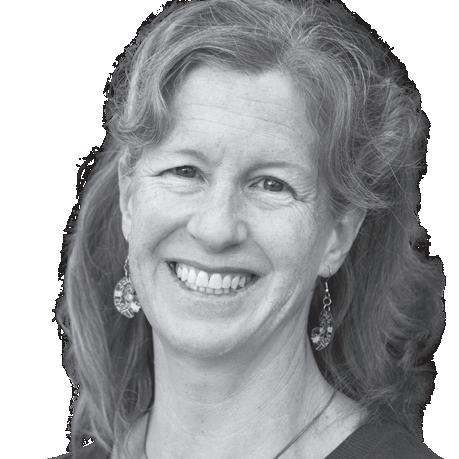


Dr. Jennifer “Jen” Brakeman 1 , neurobiology and honors biology teacher, has already dipped her toe in the AI water, so to speak. As the new President of the Board of Directors of a masters swim team—the Manatee Aquatic Masters—she writes monthly greetings to the membership, a task she dislikes with a singular intensity. She used ChatGPT to craft her first message which she then peppered with her own voice. Positive feedback
assignment that hones argumentative writing skills. Students found that while ChatGPT is good at churning through research, helping them get a sense of the state of current research in a short amount of time, it often missed or misrepresented important parts of those prior studies. She notes, “It’s really important that we use AI…we have to teach students how to use it well and also how and when to NOT use it. I want students to know that ChatGPT
“I want students to know that ChatGPT might be faster than they are, but it is not a better thinker than they are.”
flowed in from the swim community, adding to her inner conflict about the experience. On one hand, she says, “Oh gosh, it was so good compared to what I could have written and it saved me so much time!” Yet even as she felt appreciation for her AI partner, she also expressed disappointment, “I’m avoiding developing this skill which I am going to have to employ for the next two years!” At school, she had students compare their own summaries of scientific papers with those of ChatGPT in preparation for writing their mock grant proposal—their final project in Neurobiology—a graduate level
might be faster than they are, but it is not a better thinker than they are. More importantly, writing is important for students to further develop their own thinking skills.” She believes AI is here to stay and teachers must be prepared—which she hopes means time for professional development and collaboration with colleagues.
“The latest iteration of Adobe Creative Cloud introduces generative AI tools that I have begun teaching to my photography students,” says Harry Muniz 2 , photography teacher. He explains that he and his students have discussed both the implications of
using AI in the creative process and the ethical questions that it raises—like what “authorship” means in the AI age. So far, he notes, “Students who have used this technology have done so to expand the visual possibilities of photography in creative and thoughtful ways,” however, he cautions, “There are still many unanswered questions that this technology raises.”
Thomas Kuoh 3 , parent of a current student, also uses Photoshop’s new generative AI for his professional photography business. “It helps us brainstorm, research, write, and iterate ideas quickly.” It also helps improve and speed up workflows by automating processes that would otherwise take a long time for an individual to tackle. In the end, he says, “it is still just a tool, and the results depend on the skill and taste of the user.”
Through a survey, we learned that students have used AI to summarize reports, write essays as part of an assignment, conduct research, look up definitions of technical language, and form ideas for speech competitions such as those used in debates. One student shared that their Upper School history teacher assigned the class the task of writing an essay using ChatGPT with evidence-based prompts, quotes, and other source material. Students were graded on the quality of evidence
I’m worried it will replace the jobs we all do.
I’m worried that the more we do on screens the less happy we may become.
I’m concerned about the sometimes unsettling responses it can give you. Fun can turn dark quite quickly.
I worry that students will rely on it in ways that don’t serve them in the long run—and lose their learning capabilities.
Identity theft is a concern.
If it can recreate our likenesses and even generate video of us, what can we trust?
I’m excited for ways it can push back on societal structures and also worried about the ways it can perpetuate them; creating new inequities.
used in the prompt. “I personally wasn’t a huge fan of this assignment, because I like being able to have control over what I am writing and not just blindly turning in something, even though that was the task. I have mixed feelings about AI, I don’t really love that teachers are telling us to use it, but it does have its benefits!” shared an Upper School student.
Middle School students are currently using a science curriculum published by CK12 which has an AI empowered tutor built into the online textbook. ‘Flexi’ the tutor is interesting in that it can create analogous examples of explanations, framing information in more relatable terms for individual students—a herald of the personalization AI promises to bring. While it’s too early to say if or how Flexi is impacting learning in

referred to as “creators,” leverage online platforms to share a wide range of content, including videos, articles, podcasts, art, and more. Justin explains that making a Hollywood movie is an incredibly expensive venture. The process of creating and distributing a multimedia production involves many people with highly specialized skills including voice over, CGI (computer generated imagery), live action video, podcast, and illustration. “Think about apps like TikTok,” he suggests. “These are creative engines for everyone to be—where anyone can be—a creator. Tools like these are gaining momentum worldwide and lowering the barrier to be a creator—to tell your story to larger audiences.” AI makes it possible to create multimedia content with all the same elements with fewer people.
“Speaking institutionally, I think we’re taking a position of curiosity and intrigue, not fear or aversion.”
7th and 8th grade science classes, we are certainly eager to hear more.
AI is a central pillar of what Justin Alanis 4 , a lifelong entrepreneur and current parent of two Head-Royce students, has made his life’s work. His venture, Story.Co, which he started with his brother, is what he calls “a next generation entertainment platform at the nexus of the creator economy.” According to ChatGPT 3.5, “a creator economy” refers to the economic system that has emerged with the rise of digital platforms and technologies, enabling individuals to create, distribute, and monetize their own content. In the creator economy, individuals, often
“AI is getting good at all these things,” he assures. What once required a cast of thousands, now can be made with only a few people. “However,” Justin stresses, “humans still need to be at the helm—the human element needs to guide the direction and the spirit of the story.” When asked how he feels about AI and education, he is confident that “students will absolutely learn how to be critical thinkers with AI, in fact, AI can help students become more critical thinkers.” He believes students will need to know how to harness AI for the future, ”Kids will still need, more than ever, to build strong foundational skills of reading, writing, thinking, and

speaking. If they can master those skills, then there is an opportunity to leverage AI even more powerfully to improve and build upon their work, provide better prompts to the AI, and work more harmoniously with AI in the future. But to do that, you need to understand the tool’s strengths and shortfalls and be able to think critically.”
Joel Sohn 5 , Assistant Head of School for Policy and Strategic Initiatives, has used AI to crunch through data that he says would have taken him weeks to organize and process. “So from an efficiency standpoint, I’ve found it very helpful,” he stresses. “Speaking institutionally, I think we’re taking a position of curiosity and intrigue, not fear or aversion. Using AI in learning, teaching, and the business operations of the school will take critical engagement and philosophical discipline—both of which take time.” He acknowledges that AI won’t be implemented overnight, but notes, “We are talking about how, when, and why we would use it and being thoughtful about our approach.”
Considering these accounts at the cusp of the next radical shift in technology, the impact on education is becoming increasingly pronounced. The narratives shared by our community members, including educators, parents, and students, paint a complex picture of both the promises and challenges AI presents in the realm of teaching and learning. Dr. Brakeman’s experience with ChatGPT highlights the efficiency gains but also raises questions about the balance between convenience and skill development. Harry Muniz and Thomas Kuoh offer insights from the perspective of the arts, exploring the creative possibilities
“I use ChatGPT whenever I have writer’s block. However, I only use its responses as a starting point. I never use what it suggests verbatim. ChatGPT is helpful as a writing resource, but it’s not a perfect tool—it’s not going to write out a perfectly published novel for me, but it might give me a few salvageable paragraphs.”
Nori Patterson, Advancement
“I have encouraged students to use ChatGPT to help solve specific tasks in coding assignments. This allows students who are learning a new programming language to spend less time on syntax and more time critiquing code by solving bugs. Debugging is incredibly useful in the modern workforce where programmers spend a significant amount of time scrutinizing pre-existing code.”
Nate Potter, Upper School
“The biggest benefit, I feel, is its effect on student engagement. Being able to create vocabulary exercises that are fun and funny to kids goes a really long way. Vocabulary can be pretty dry and while I may consider myself a fun and creative person, there are so many interesting areas that kids have that I don’t know much about. Having a tool that helps me to engage students through detailed sentences about Taylor Swift, Marvel characters, Barbie, and the NFL helps engagement and as a result, retention of vocabulary. It also simply injects a lot of fun and laughter into the class.”
Willie Adams, Lower School
“It’s great at summarizing free response fields and the frequency of keywords in surveys.”
Shahana Sarkar, Dean of Academics
“I use it to take my course outline and change the tone to be more student friendly or sound more exciting. I also use it to find related outlines or topics to my curriculum.”
Gin Saepharn, Middle School
“I’ll ask it to explain something like ‘What is gel electrophoresis,’ and it gives me a pretty good explanation.”
Soleil M. ’25
and ethical considerations of AI tools. Meanwhile, our students are already engaging with AI in various forms, from summarizing reports to utilizing AI-powered tutors, highlighting the early stages of integration in the educational landscape.
As we navigate this evolving space, one constant resonates: the importance of cultivating critical thinking skills
alongside AI adoption, ensuring that students not only use these tools effectively but also understand their nuances and limitations. With AI poised to be a transformative force, the educational journey will undoubtedly be shaped by a delicate balance between harnessing technological advancements and preserving the indispensable human touch.

The diverse and impactful journeys Head-Royce alumni pursue after graduation showcase the unique talents and achievements within our community. Whether simultaneously or on different timelines, the shared experience of attending HeadRoyce creates a familial bond that extends beyond school years. With over 5,000 alumni at-large, our network is robust; it’s not surprising that former classmates become colleagues and that the name “Head-Royce” opens doors and establishes immediate trust.
We met up with alumni to hear about their career journeys and how they are working together. Their stories highlight not only individual and shared successes but also the strength of the alumni network across fields. What they impart paints a picture of vibrant and engaged citizens, where alumni and students alike contribute meaningfully to their communities and beyond.
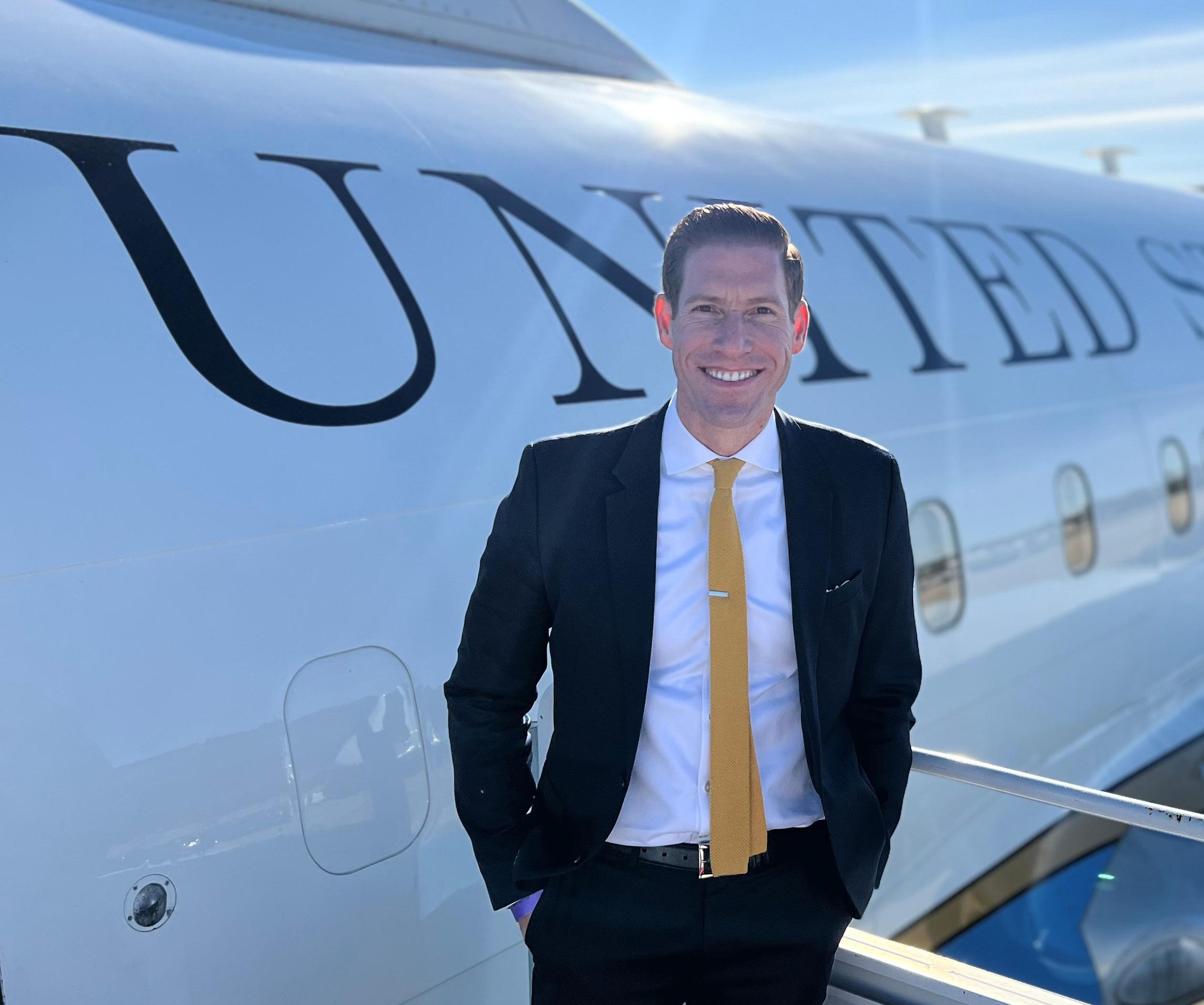
Andy Rabens ’01, the Special Advisor to the Vice President for International Economics and Global Partnerships, began his political career interning on Capitol Hill by day, while making ends meet selling theater subscriptions in the evenings and weekends from the telemarketing bullpen of the Kennedy Center. The week he started college was the same week the Twin Towers fell and nearly 3,000 Americans lost their lives; a day he recalls “opening my eyes to the larger world around me.” As his dream of becoming a professional tennis player began to fizzle, his interest in global politics and international affairs sparked after he took a few government
courses; growing into a passion that has continued to the present day.
Andy laughs fondly about his time in ticket sales, admitting that selling tickets is a little like selling ideas. “You have to be willing to talk with anyone without fear of being rejected; a good life skill!” Andy continues, “Too often we discount skills that are honed in unusual places even though they can be very transferable.” During his years as a student-athlete at HeadRoyce, for example, sports had a big effect on his belief in the importance of a team-oriented approach to work and life. Learning to be a team player can be challenging but the benefit of
working together on a shared goal is in itself a reward. “Individuals can offer up big ideas to spark change, but it often takes a team to mobilize around those big ideas and deliver meaningful and lasting impacts.”
While starting his career in politics took a little time, it was not the most difficult challenge Andy has overcome. “I had a severe lisp as a kid and grew so frustrated by my inability to enunciate the ‘dr’ sound in ‘Andrew’ that I began using ‘Andy’ instead.” The years he spent working on speaking more clearly have paid off, as have his efforts to overcome an earlier fear of public speaking. “By attending countless
Toastmasters classes and forcing myself to repeatedly get in front of audiences, I improved.” The good news, he says, is that public speaking, like many skills, is one that can be learned. “We can invest in and get much better at it with work and practice, allowing us to overcome some of our fears, perceived roadblocks, and challenges.”
Andy is currently in his 15th year of work for the U.S. Government across four presidential administrations and six Secretaries of State at the U.S. State Department and sees himself squarely as part of Team USA.
“I’ve worked across numerous presidential administrations, beginning with the end of the Bush administration, continuing through the entirety of President Obama’s and President Trump’s administrations, and now I am proud to be serving in the Biden-Harris administration.” As a civil servant, he sees presidential administrations a bit like an Olympic relay race where you may have your preference of runners to run different legs of the race with their unique style or approach, but at the end of the day, you are part of Team USA. “I am doing my best to help whomever the American people elect be successful.”
The reward? So many different components come to Andy’s mind. “Getting to work on issues that matter and can potentially change lives for the better at home and abroad and being part of incredible teams like
the current Vice President’s team where I’m surrounded by inspiring colleagues who care deeply about the country, the issues they work on, and the power of government to positively enhance people’s lives,” he reflects.
He now works in the office of the Vice President of the United States, Kamala Harris, along with HeadRoyce alumna Dr. Rebecca (Friedman) Lissner ’05, who is the Principal Deputy National Security Advisor to the Vice President. “I work with Dr. Lissner (aka Rebecca) on a day-to-day basis and she is an incredibly dynamic leader, thinker, and writer; an absolute rock star.” Andy notes that they have a shared connection from growing up in the diverse community of the Bay Area, and attending Head-Royce.
His parting message to those interested in but perhaps shying away from careers in government or public service is: “Give it a go. Government is only as good as the people willing to work in it to create the changes that we seek. Personally, I’m still energized by what the government can do,” stressing that we need more young people with fresh ideas to help shape the future. “Yes, things may feel divisive now,” he says, “but I truly believe that the more we talk to one another as people, find commonalities, and break down the armor that many of us wear, we will find greater common ground, less divisiveness, and opportunities for further collaboration.”

Oliver Kremer ’04
Marcus Byrd ’11
Leo Kremer ’98
Dos Toros
As pictured in the 2001 Nods and Becks, Rebecca “Becca” Friedman served as President of the Middle School Student Council, a presage of things to come.
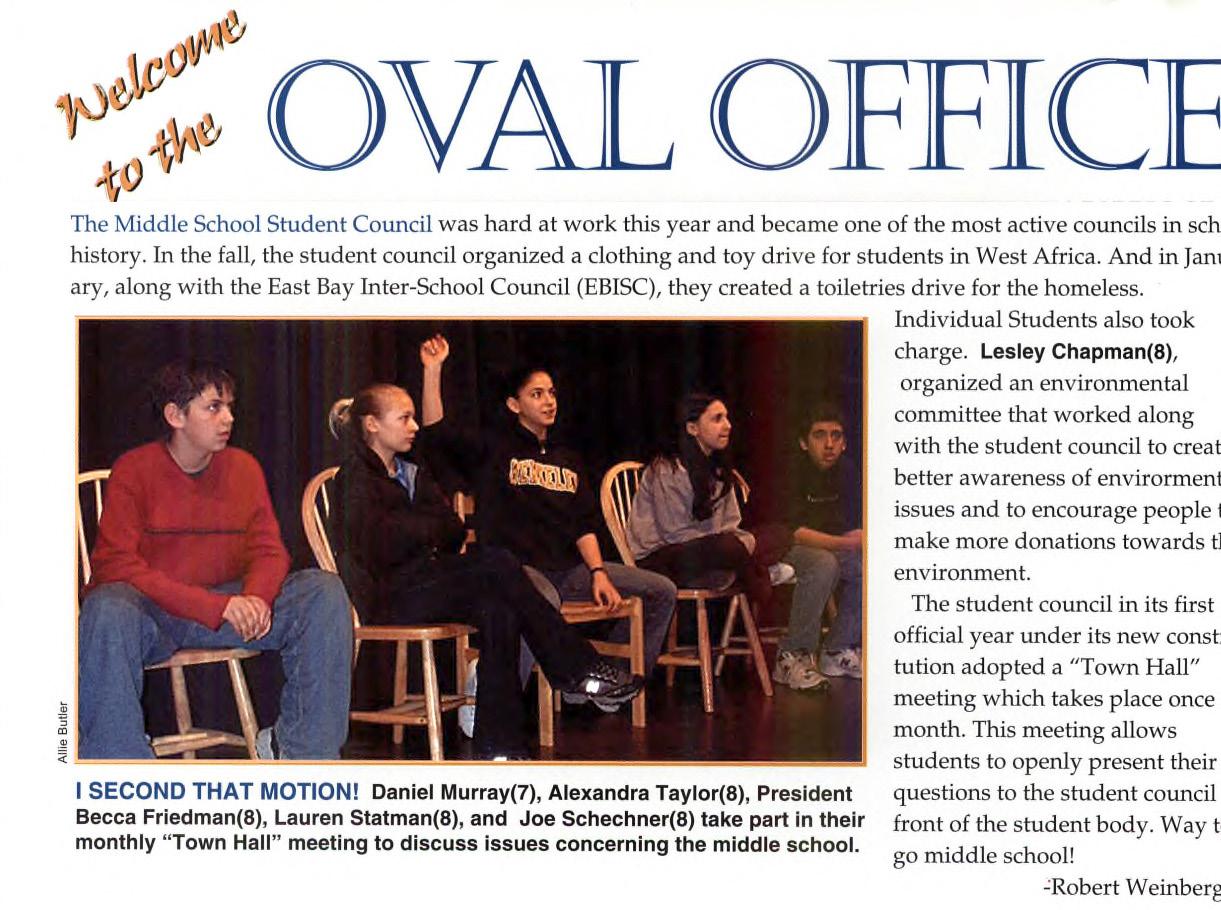
Leo Kremer, Co-Founder and former Co-CEO, Dos Toros (with Oliver Kremer), currently Founder-at-Large, Founders Table Restaurant Group and Partner, Shtetl Ventures (Oliver holds the same roles): The most meaningful part of working with other HRS alums was the automatic trust, respect, and playfulness. We had bedrock shared perspectives on communication, teamwork, and importantly, burritos. It was also fun being able to reminisce about teachers, sports teams, and various academic projects. Every day at work with Tyler, Marcus, and Oliver was a pleasure.
We faced many challenges around growth and the need to adapt the organization at each stage to our new reality. Every business has ups and downs and we learned how to face both with tenacity and equanimity. We
What has been the most meaningful part of working with another HRS alum?
I think that the most meaningful part of working alongside an HRS alum is having a friendly face to be candid with!
As I am just starting in office life, there is a lot to learn both professionally and socially. Trying to make friends in the office looks a lot different from our days at HRS, and having someone who I know and can go to for advice and support is such a game changer! I’ve already been bugging Samir
about help on mini projects, and he is always such a great resource. It’s always good to have someone who isn’t judging your questions or confusion, and [is] there to be in your corner!
What challenges have you faced in your career / how did they lead you to where you are now?
As a recent graduate from Colgate University, I am at the very beginning of my career. There are two challenges that stick out to me. First, getting the job I have today was of course a challenge as networking, applying, and interviewing were all very new to me. I wish I knew more about the HRS
alumni connections program when I was applying to jobs, because I know that Jayhawks are always excited to help each other out. I have already had a couple of younger HRS alum reach out to me and I am eager to talk to them. Secondly, it is difficult to show up authentically at work. I am new, I am young, I am inexperienced and (let’s be honest) awkward most of the time, so finding out how to share my true personality is something I am continually striving towards. This is another thing I love about working alongside HRS alum, it is refreshing to have someone around who knows me as “Claire,” and not as the “new Marketing Associate.”
found with Dos Toros, and I continue to believe, that one of the greatest risks in business and life is inaction.
Tyler Lohman, Co-Founder and Vice President of Development, Dos Toros; currently Senior Vice President, Development, Health Hospitality Partners: [The most meaningful part of working together was the] inherent trust based on our shared HRS experience. Whether we overlapped or not during our school years, I knew that by working alongside other HRS individuals we had a solid foundation, well-developed IQ and EQ, and clearer understanding of the world and each other, that would not be possible from the outset had we not had that common HRS experience.
Successfully working alongside friends for so many years sets an unrealistically high bar for comparing future opportunities. My post Dos Toros job search (“retylerment” as I came to call it) coincided with the onset of COVID-19 and lasted a full year, in large part due to my fear that no other experience could match what I previously had. I took my time and explored a wide range of fields and opportunities, but continued to be inspired by young, mission driven companies. In
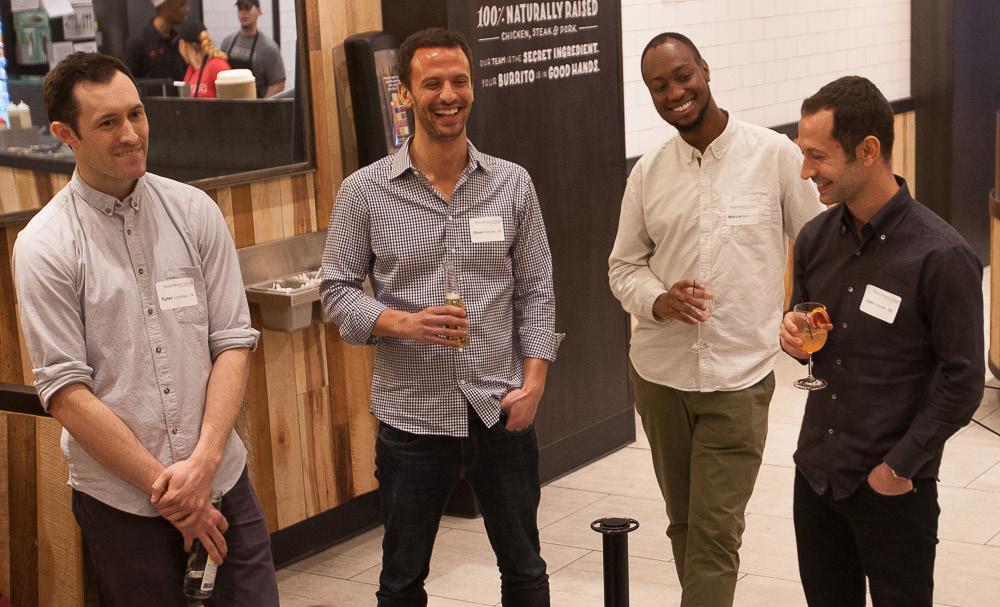
March 2021, I accepted an executive position with Health Hospitality Partners (HHP), which is a healthcare amenities company, coincidentally also started by two brothers; I think I’ve found my next career.
Marcus Byrd ’11, Head of Marketing (2015–2020), Dos Toros; currently Director of Marketing and Brand (employee #1!) for Hart House (2020–present), Kevin Hart’s new hospitality concept: I’ve lived in three other major cities—Washington D C , New York City, and Los Angeles—and there is nothing like people from the Bay Area! More specifically, I think Head-
Royce does a great job of helping students develop an innate sense of self, while always working toward the greater good and the community. Despite never living in the Bay Area after high school, I have fully embraced working at start-ups in my professional life. I love how fast-paced the environment can be when no two days are the same, however, it also requires immense organization. As a marketer I love finding omnichannel ways to grow a business, but it is incredibly important to try to measure each tactic on its own merits so you can digest what worked before reapplying or changing tactics. My motto for 2024 is “Dream big, but aim small!”
 BY PHILLIP CHIN ’20
BY PHILLIP CHIN ’20
Trevor Parham ’01 started his first business in middle school, taking advantage of the arrival of digital music to DJ for Head-Royce dances. In an era of vinyl records, Parham said that back in 1997, “no one had ever seen anybody bring a desktop computer to a party to DJ… They had no idea why I had it there and I would often have to explain it.”
Thirteen years after graduating, Parham would create another forwardthinking business called Oakstop. On the surface, Oakstop is an Oaklandbased coworking company, but Parham says it’s really a way of “preserving a place for the community to participate
socially, economically, and culturally, such that the community can create even more anchoring institutions for itself, using our platform.”
Oakstop supports meetings and events from business meetings to baby showers. Several community services run through Oakstop, such as a mental health program, a workforce development program, and a creative economy program that empowers artists to have a seat at the table for “broader conversations around the local economy.” Even the walls are filled with local artists’ work to provide them both exposure and potential business opportunities.
Oakstop’s community-oriented business model has worked. In
the ten years since its founding, Oakstop has grown to five buildings and 75,000 square feet of space.
Parham realized how special Oakland is after leaving to attend University of Pennsylvania and then traveling globally. “I wanted to contribute to the fabric of both the culture and the economy in Oakland because I believe that Oakland has a really bright future in terms of a sort of global stage,” said Parham.
The idea for Oakstop began with Parham’s belief that communities of color needed to be able to participate within the local economy and culture. As an artist himself, Parham wanted Oakstop to be a way to value artists as “culture keepers.”
“It’s an age-old pattern—first, artists come into the spaces and the buildings when they’re blighted and vacant and nobody’s interested,” said Parham, “and then they beautify those buildings and the neighborhood. And then coffee

those people have no money.’ But that’s not true, said Parham. People from those communities who want to work at a cafe might be spending $10 on coffee and pastries ten times a month, while Oakstop can offer them a coworking
come home to a couple of new albums. Eventually he decided to put that huge array of music access to use.
Parham still positions himself at the intersection of business and creativity. “I was able to take a combination of
I WANTED TO CONTRIBUTE TO THE FABRIC OF BOTH THE CULTURE AND THE ECONOMY IN OAKLAND BECAUSE I BELIEVE THAT OAKLAND HAS A REALLY BRIGHT FUTURE IN TERMS OF A SORT OF GLOBAL STAGE.
shops come in, other businesses surface, and eventually, when there’s more interest in that neighborhood, they push all the artists out.”
In order to break the cycle of artists and communities of color being “the first to be both leveraged and displaced,” Parham said, Oakstop “metabolizes” the costs of commercial real-estate for those communities. Most people do not need an entire commercial building, so Oakstop buys those spaces and then offers smaller chunks for shorter periods of time than a typical one to three year lease would allow.
Parham wanted to create a different pricing model that could serve artists and communities of color, but was told his plan, ‘didn’t make sense because
space for half that price, along with free coffee. Instead of “selling exclusivity at a high price, we’re selling inclusivity at a much lower price. And the value is you have access to a much broader and more diverse range of people.”
Even when Parham was at HeadRoyce, he was curious about exploring new technologies and starting his own business. He brought CDs to birthday parties and people’s houses, which meant he usually ended up playing the role of DJ. With the advent of digital music in the mid ’90s, he began downloading music from the internet before most people even realized that that was a possibility. In middle school, Parham would set up downloads before school and then
cultural appreciation with technology and with business and use that as a way to then help build and serve community.” That is the throughline of Parham’s numerous ventures, from a video production company in college to a post-grad job running a creative agency that advised business executives. Many of his interests were incubated through his relationships at Head-Royce, like a partnership with a friend that turned into the DJ company or the mentorship of former Art Department Head, Jeff Key.
In the ’90s, Key’s desire to incorporate technology into his art classes made him one of the only teachers with a computer in his room. He recollects Parham’s curiosity
with early versions of Photoshop and Final Cut Pro noting, “He came in during his free time and would just sit there for hours.”
When Key left Head-Royce to join Youth Beat, a media-training organization for Oakland students, Parham was one of Key’s first calls. “Trevor’s been one of my go-to people for advice,” said Key. When Youth Beat needed space for their apprenticeship program, they rented from Oakstop.
Reflecting on his time with Key as well as his early interests in all kinds of digital media, Parham says, “Even if it wasn’t directly part of the core academic offering, there were outlets and resources and people at Head-Royce for me to delve further into the things that I wanted to learn about. And I feel that overall, it was a culture of learning.”
Compared to other academic institutions and spaces that Parham would move on to, he says that Head-Royce stands out as “a place where you learned how to learn.” Parham still uses the techniques he learned at HRS, particularly the scientific method. As an entrepreneur, he suggests, every idea starts with a hypothesis about what would be economically viable; “a formalized approach to asking a question. It’s embracing that curiosity within yourself.”
For example, Parham says, “Oakstop was a social experiment.” The experimental question? “What would it be like if you created a community space that was open to those most marginalized… within the context of trying to create economic mobility?”
Ten years later, Oakstop has grown to 20 times its original size. “In essence, the experiment worked,” says Parham. But he’s not resting on his laurels as he works to expand Oakstop’s programs and community impact.
“He’s a busy man,” said Key, who is still trying to get Parham to join Youth Beat’s Board of Directors. “He’s definitely become a mover and shaker in the Oakland community.”

Alumna Eva Allen ’12, founder and owner of Full Belly Bakery in Montclair, recently presented to the 7th graders on the topic of entrepreneurship ahead of their annual Math Marketplace event. She shared what it was like to start and run a business from the ground up including figuring out cost per item to price appropriately (the most important decision for the marketplace “businesses!”) as well as her journey to become a professional baker and business owner.
Anokhi is the District 4 Commissioner on the Oakland Youth Commission (OYC) and she also serves on the Oakland Fund for Children and Youth. The OYC allocates $18 million to youth issues in Oakland throughout the year, and Anokhi helps make some of the decisions about those funds. She came to be involved following an interview she conducted on
team conducts research on topics like homelessness and safety and includes the results in reports that provide advice and recommendations to city leadership. “I like that I am able to meet kids all around Oakland and learn about what they need— which is increased access to quality education and increased safety.” She is confident in the commission’s voice
THE OYC ALLOCATES $18 MILLION TO YOUTH ISSUES IN OAKLAND THROUGHOUT THE YEAR, AND ANOKHI HELPS MAKE SOME OF THE DECISIONS ABOUT THOSE FUNDS.
housing policy with the Oakland City Councilmember Janani Ramachandran, District 4 representative. Afterwards she learned that there was an opening on the OYC. In her position on the commission, she serves on one of the district’s subgroups where her
and power as the City Council has been responsive to their recommendations. As for a career in politics—she doesn’t think that’s the direction she will take but she will continue to passionately advocate for the underserved voices in her community.

After a pre-college program fell through his sophomore summer, Samir set his sights on interning for Oakland Councilmember, Treva Reid, who represents District 7. Having encountered Reid during a previous volunteer project, he was drawn to the work of her office and local governance. His persistence—which he humorously refers to as “pestering”— paid off; he began that summer and has been working for her ever since.
In his capacity as a community service intern, Samir is involved in a wide range of tasks including writing
press releases, organizing events, conducting research, summarizing meeting minutes, and talking with constituents about different topics—some of which are emphatic complaints—and condensing feedback into concise language for city staff. He smiles wryly when asked if that means he has to remove expletives. Through his work, Samir has gained insight into significant social issues and the individuals directly affected by them as well as the intricacies of government operations. When asked how this has influenced his
perspective, he reflects compassionately, “I have a better understanding of the root causes of crime and how many criminals have to resort to it because of a lack of opportunity and education. I am also less critical of the government in general because I know how hard people work, especially at the local and state levels.”
Smiling with excitement, he recalls a highlight—his involvement in a new city event he helped organize called the “Day of Action,” a partnership between Councilmember Reid and communitybased organizations, neighbors, and over twenty city and county partners. Taking over several city blocks, the event was “a unified community strategy to address the violence, open-air drug markets, homeless encampments, illegal dumping/blight, and traffic safety issues impacting this corridor,” according to an article published in July 2022 about the event on the City of Oakland’s website.
Thinking back to his first summer, he explains that he couldn’t yet drive and had to Uber to the city chambers for work every day. “It’s a lot of fun actually,” says Samir. He feels he is able to do things he would not otherwise do and that his work is helping to bring about positive change in his community. He glows with pride when he talks about the highly publicized 2022 Oakland Promise event, a college and career scholarship program, where Oakland native, Vice President Kamala Harris spoke. He has met many dignitaries along the way and while he is very interested in politics, he doubts he’ll become a politician. Reflecting on what he’s learned from his experience, Samir notes, “I have vastly improved my public speaking, research ability, time management, and problem-solving skills. I think that all of these will translate well to college and all of my future jobs.”

Pioneering Education: HRS Sponsored Study-Travel Programs
IF THIS ARTICLE WAS ABOUT time travel instead of study-travel, we would magically transport back to the early 2000s when the nascent Head-Royce global education program began. It was 2002 when three HeadRoyce faculty members—Guybe Slangen, former history teacher and then Upper School Dean; Nancy Feidelman, former History Department Chair, 11th Grade Dean, and current Director of the Center

for Community Engagement; and Paul Chapman, former Head of School—first led a group of students and teachers to China, an undertaking Guybe learned how to facilitate just the year before in a CAIS workshop.
Since then and for over 20 years, Head-Royce has pioneered immersive and diverse experiential learning studytravel opportunities across divisions and grades as a part of our Global Education curriculum which is run through the
Center for Community Engagement. As a founding member of the Global Education Benchmark Group—a nonprofit association of 300 K-12 schools that supports member schools and empowers students as global citizens— global education is aligned to our school’s core beliefs and is fundamental to our dedication to sustainability, equity, and civic engagement.
Students and teachers have traveled, studied, and experienced different

A group of Lower School students visited Québec, Canada last year for a cultural and language immersionlearning excursion, an experience that had a lasting impact on some of our youngest community members.
A moment that I remember was when we (the group) went to this old rickety bridge and my friend Parker W. ’30 and I didn’t want to go on it, but it was so worth it when we saw the view.
Claire S. ’30

The Québec trip helped me understand other cultures because I was truly immersed and I got to go to so many interesting places, like a maple syrup farm. It showed me how diverse Québec is. This trip has had a lasting impression on me. It helped me with my French, because we had to speak it, and it also helped me appreciate how many opportunities I get to enrich my learning.
Lily W. ’29The trip gave me insight into how other people live and a better understanding of Canadian life and culture…I feel grateful to have had this experience.
Lucy B. ’29.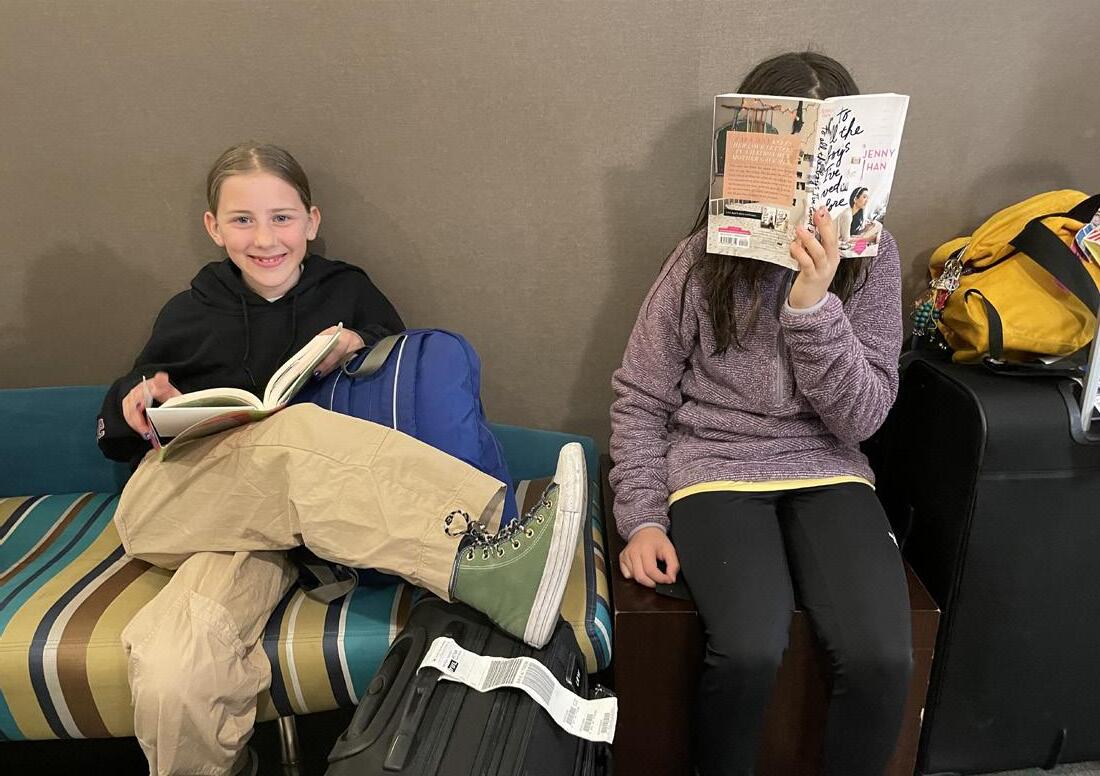
Former Middle School students explored Black history and culture on a travel-study program in Washington, D.C. in 2019 (below). Fifteen Upper School students attended the “Of Cuba and Connections” travelstudy program in the Spring of 2019, the purpose of which was to explore the formation of identity on both personal and national levels (right).

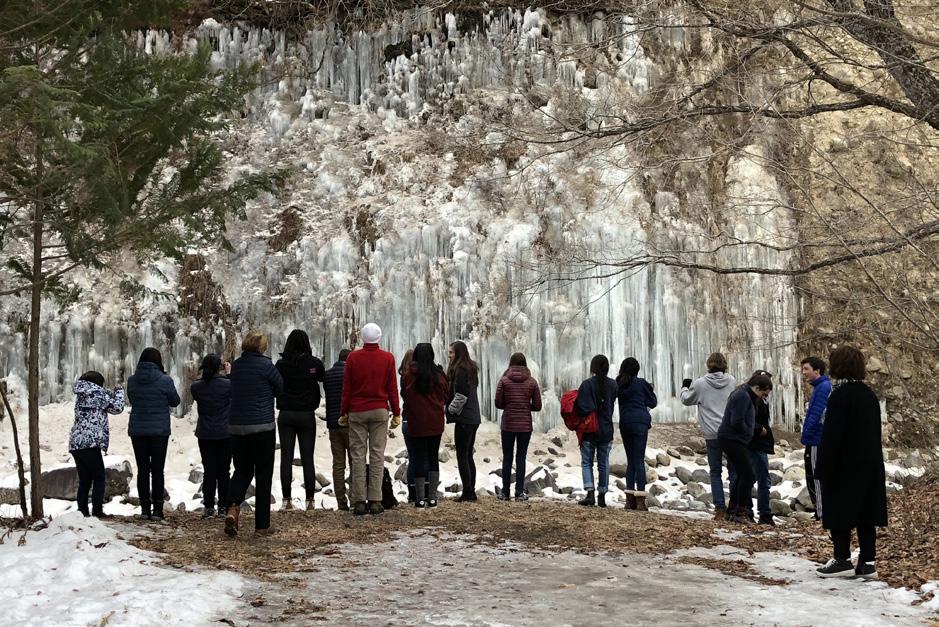
cultures, languages, beliefs, traditions, and ways of life, taking in the sights, smells, sounds, and tastes from all over the world together, including destinations in Japan, Thailand, France, Spain, China, Italy, Canada, Costa Rica, the Channel Islands, and more.
These transformative opportunities have broadened students’ horizons by exposing them to diverse cultures and landscapes, shaping their attitudes about their own lives while fostering an appreciation for others’ perspectives.
Nancy Feidelman explains, “We work hard to craft learning opportunities that aren’t available to the casual traveler, often forgoing popular tourist destinations to prioritize conversations with local activists and experts.”
Though common at the collegiate level, study-travel programs are less prevalent in primary and secondary education. At Head-Royce, globalmindedness is of paramount importance in today’s interconnected and interdependent world. We
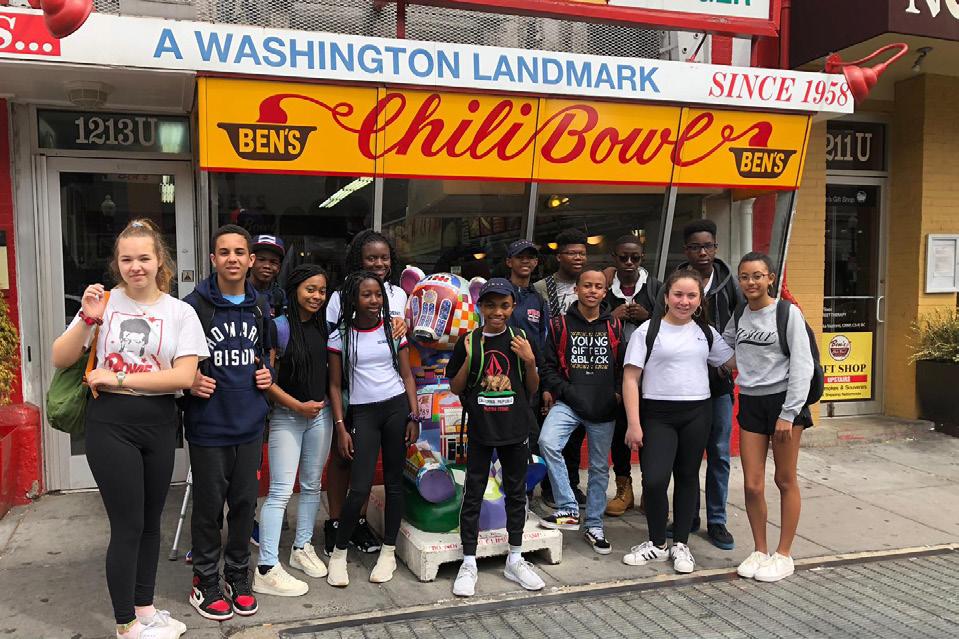
In February 2018, Upper School students admired the Shirakawa Hyochugun (the Shirakawa Giant Wall of Icicles) in Japan during a travel-study program (left).
integrate a global studies approach into our entire curriculum through specific courses, thematic units, and interdisciplinary approaches that incorporate global perspectives into a wide variety of subjects. Study-travel is an integral part of this curriculum.
The mission of the Global Education Program at Head-Royce is to prepare our students to be effective global citizens as they face and embrace the challenges and opportunities of the future.
Nurturing empathy, cultural competence, critical thinking, and problem solving skills, these hands-on experiences also take students into an intentionally uncomfortable liminal space. By facing seemingly ordinary travel challenges as a group—like tackling transportation options in a different language—students learn how to navigate the unknown and be present for the unexpected.
This year, Head-Royce is offering one Middle School and one Upper School study-travel program. Middle School
students interested in marine and island ecology will visit the Channel Islands, home to one of the most astonishing collections of marine life on the planet. Students will stay in UC Santa Barbara (UCSB) dorms for two nights to meet with professors at the UCSB Marine Science Institute. The rest of the program will be spent on Santa Rosa Island, where students will learn about the island’s history and conservation efforts, participate in hands-on field research, and observe the rich and diverse array of species endemic to the Channel Islands. Upper Schoolers interested in sustainability and culture have the opportunity to travel and learn in Greece for an immersion session.
As we propel our students into these enriching experiences, we remain dedicated to our mission. Through study-travel and global education, we shape not only learners but compassionate, informed, and empowered leaders of tomorrow.
It was a wet, cool evening in downtown San Francisco. As I entered the Great American Music Hall in anticipation of an enjoyable night listening to a local artist with friends, a familiar face greeted us inside the door—Head-Royce senior Matthew W. ’24. He was there volunteering with the bone marrow registration nonprofit, Be the Match, and he expertly and efficiently guided us through the registration process as we casually joked about his saving the world on a school night.
How did I recognize this Head-Royce student in the wild? Because Matthew and I have worked together over the last year and a half as members of the Student-Alumni Ambassador Team (S.A.A.T.) and the Alumni Council. Over the last few years, the alumni community has made clear their desire to have a more direct impact on current students. Matthew is leading the SAAT in his senior year, attending Alumni Council meetings to provide input and connection into the lives of today’s students.
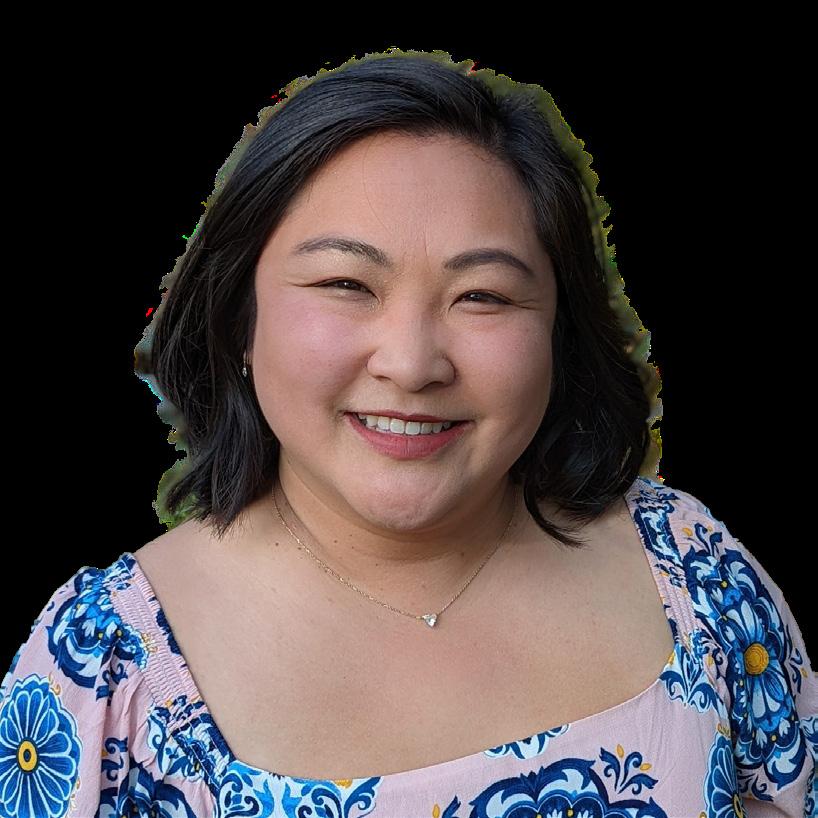
Working together is a theme in alumni programming this year. The annual Adulting 101 panels were broadened to encompass a host of events throughout the year, bringing alum experts on campus to speak with middle school classes about managing the finances of a business to meeting with the expository writing (Expos) class to share tips around journalism. Alums (and alum parents!) oversee senior projects, internships, and even jobs. In this issue of the HRS magazine, you will read many stories of how alumni remain an integral part of the community and have supported students and each other!
My first real job after college was an opportunity created by a Head-Royce parent—thanks for taking a chance on me, Hollis! The questions I pose to my fellow alumni: Have you ever worked with another Jayhawk? How do you envision yourself enriching the experiences of today’s students?
I am always open to your comments and feedback. Please share your story or ideas with me by emailing alumni@headroyce.org
Always,
 Camden Louie-Grabill ’08 Alumni Council President and Trustee
Camden Louie-Grabill ’08 Alumni Council President and Trustee

As the saying goes, it takes a village to raise a child and at Head-Royce, that is no exception. In addition to our dedicated community of parents and guardians, teachers, and professional community, we are blessed with a strong group of alumni who help to inspire, guide, and support our students.
As alumni, they relate to and understand the experiences of our current students like no other, having walked in their shoes, or Tuffy tracks in this case. Recognizing the gift and value of our alumni community, the Alumni Office—in partnership with several departments on campus—have created the Adulting 101 progam, specifically designed for students to engage with and benefit from alumni. The components of this program include:
Mock College Interviews: In partnership with the College Counseling Office, seniors can practice their college interview skills with an HRS alum who will provide feedback, advice, and guidance.
I-Search/Senior Projects: Alumni serve as research resources for these grade-level capstone projects.
Summer Internships and Opportunities: In partnership with the Center for Community Engagement, the Alumni Office works to procure relevant summer internships, jobs, and experiences for current Upper School students, matching them with opportunities that align with their interests and goals.
The Alumni Directory: Juniors and seniors now have limited access to the alumni directory where they can look for and connect with alumni in a specific region, college, career, or area of interest (right).

Intersession Workshops: Alumni present a two-day workshop on their area of expertise during the winter Upper School Intersession.
During Intersession in January 2023, students participated in Thought into Action: How to Start a Startup, co-led by Ryan Diew ’13 (above).


East Coast Regional Events:
Several of the annual alumni regional gatherings are scheduled during Senior Week so that seniors and their families can meet and speak to alumni while visiting college campuses (right).

Adulting 101 Keynote Speakers: Alumni present about their area of expertise to students during assemblies and in class.
Adulting 101 Keynote Speaker Ben Cushing ’08 (right) spoke about conservation, activism, and his time as a student.
I wanted to know what the student experience was like before I applied to my list of colleges. Through the Alumni Office I was connected to a group of helpful college students—the one who stood out the most was a junior at UChicago. I got to learn what it’s really like instead of having to trust the experience the school sells you on their website. This conversation ended up helping me decide that UChicago was my top choice—where I applied Early Decision—and I am happy to say that I will be attending UChicago in the fall!
Leah T. ’24

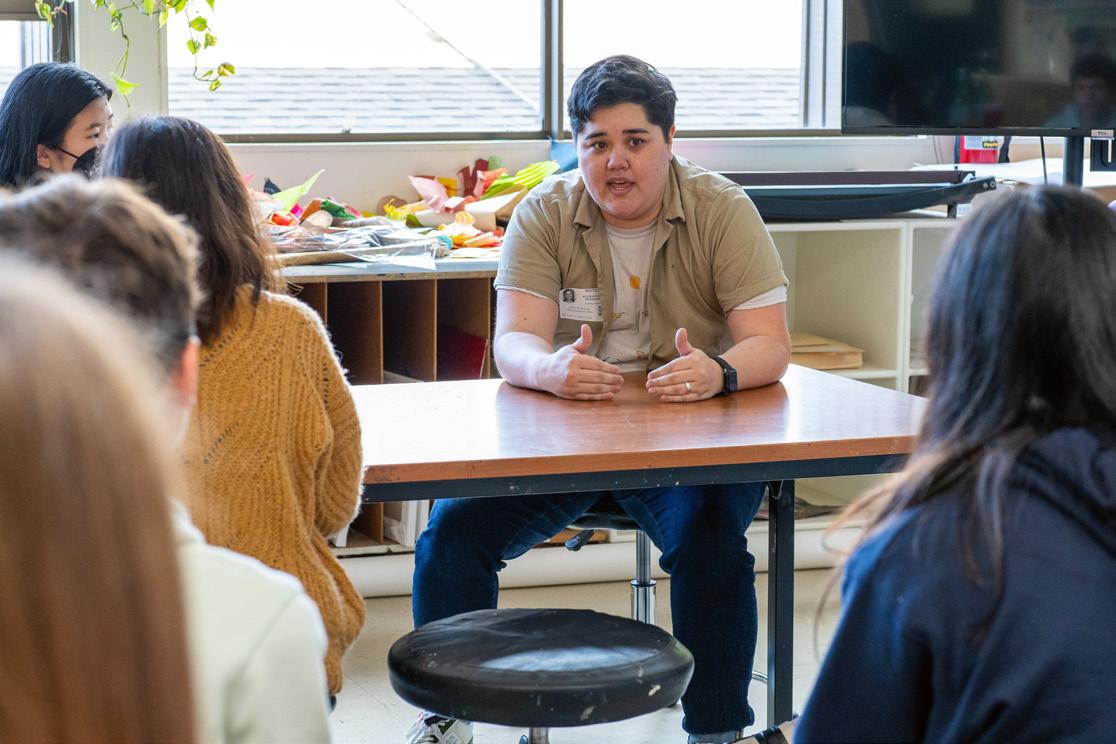
Adulting 101 Lunch and Learns: In these lunchtime gatherings, alumni—like Kristen Louis ’01 (below) and Ally McKnight (left)—share information about their career and life interests.
College Connections and Resources: Through the Alumni Office, juniors and seniors can connect with college-age alumni who currently attend schools that they are interested in, to learn more about the student experience and life on campus. Alumni are oftentimes happy to provide on-site tours. Each winter, the Alumni Office hosts a Back-to-Campus panel of college-aged alumni at an Upper School Assembly.
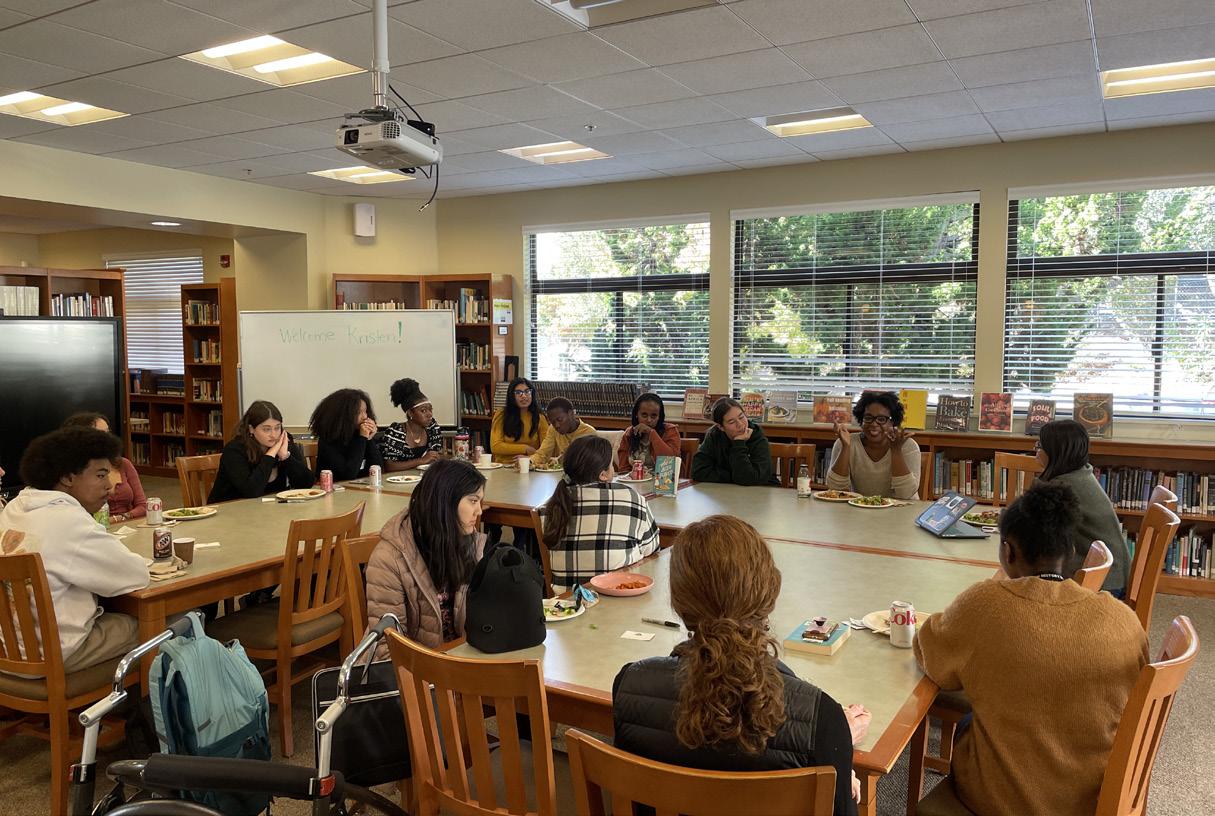
The SAAT is comprised of approximately fifteen juniors and seniors who work with the Alumni Office and the Alumni Council to provide student input and feedback on alumni-to-student programming and events (above).

OCTOBER 10, 2023
Boston-area alumni gathered on Newbury Street to reconnect with each other and to also speak with families of visiting HRS seniors who are considering schools in the area.


OCTOBER 12, 2023
Mary Fahey, who retired last year, was the guest of honor at the New York City alumni reception.


OCTOBER 24, 2023
Alumni from the 1960s to 2022 met in West Hollywood to reconnect and celebrate Mary Fahey.


Parents of alumni, former faculty, and past trustees gathered in the Read Library for their annual dinner to see one another and hear an update on the school.

KRISTEN LOUIS ’01
NOVEMBER 10, 2023
Author and alumna Kristen Louis ’01 returned to campus to share with students her experience writing her debut novel, You’ve Been Served.
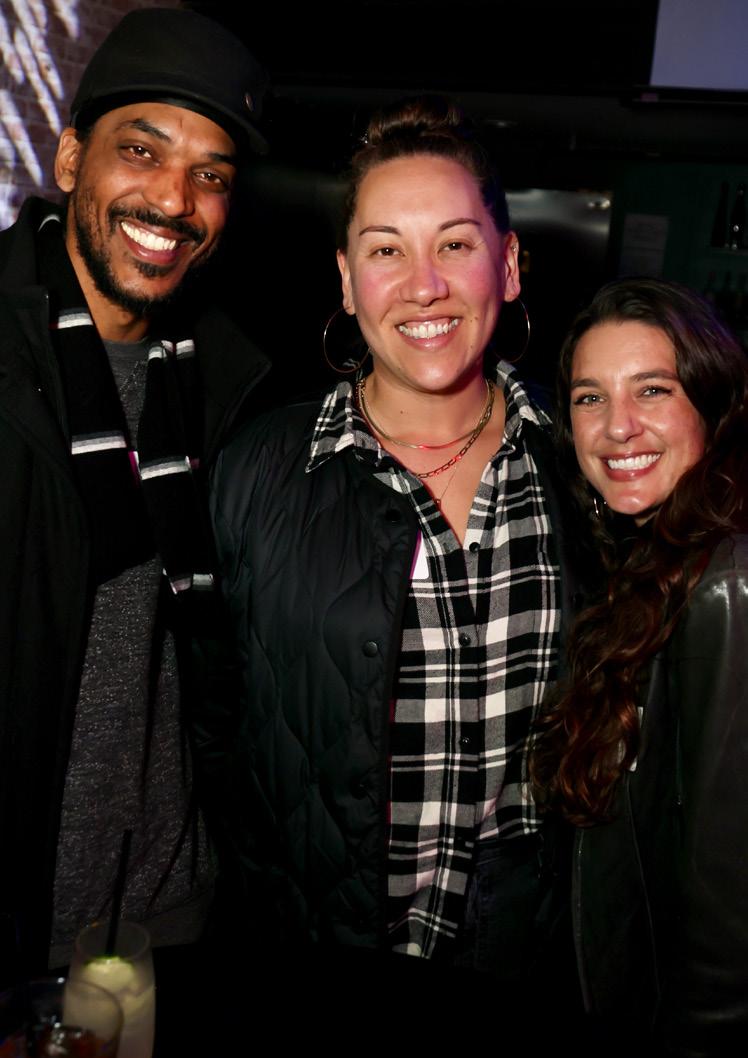

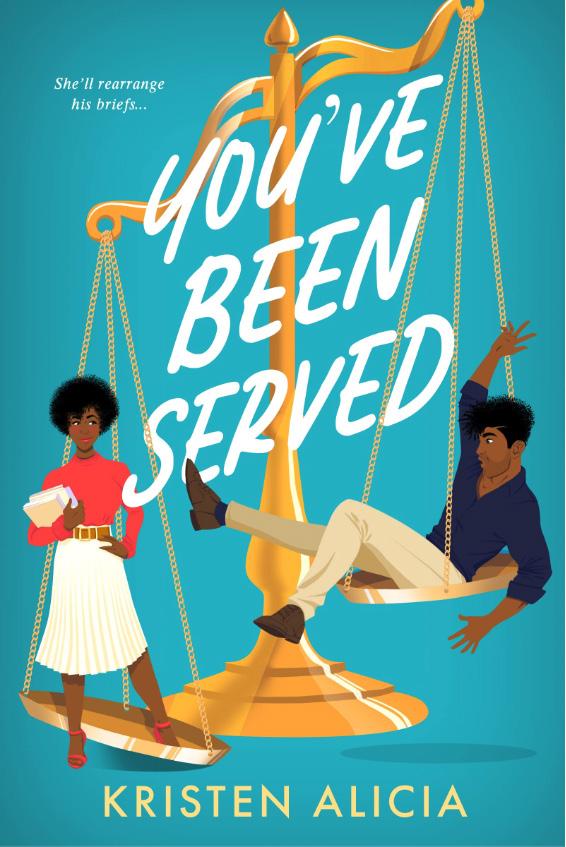
HOLIDAY PROGRAM AND ALUMNI PRE-RECEPTION
DECEMBER 15, 2023
Alumni and past faculty attended the annual Alumni Holiday Program Pre-Reception prior to watching the performance.

ALUMNI HOLIDAY PARTY
DECEMBER 20, 2023
Alumni gathered in downtown Oakland for some holiday revelry.

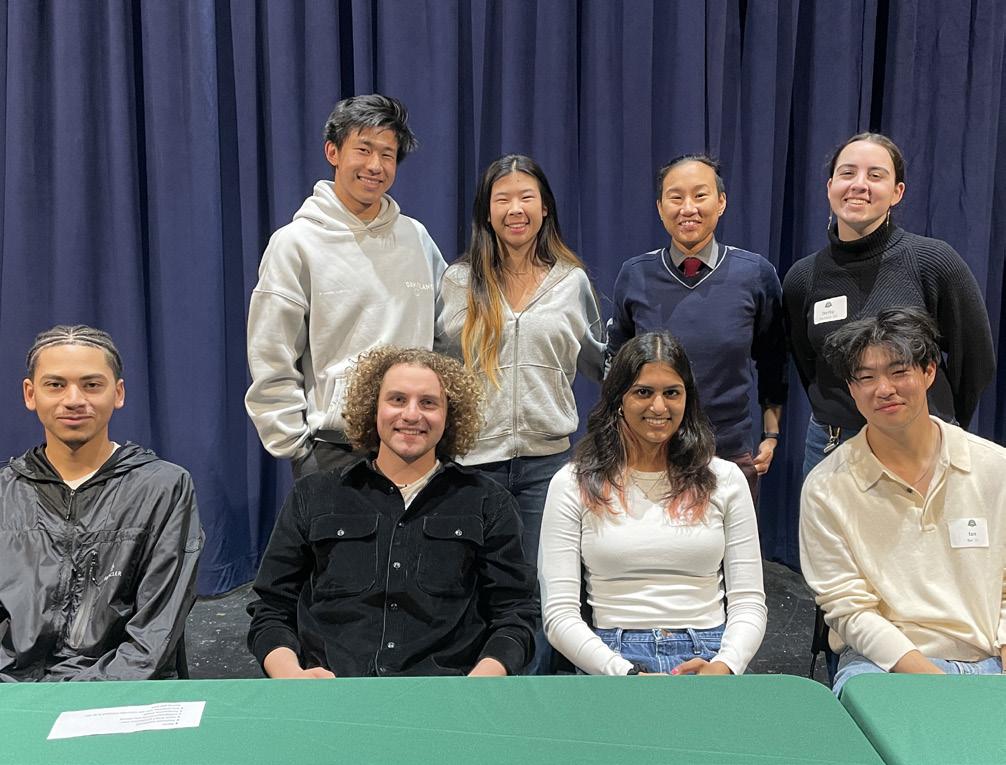

BACK TO CAMPUS LUNCH AND PANEL
JANUARY 4, 2024
Over 50 college-age alumni returned to campus to see former teachers and friends while home for their winter break. Five participated in an Upper School Assembly panel to share their college and gap year experiences with students
ALLY MCKNIGHT ’06
JANUARY 23, 2024
Ally McKnight ’06 spoke with students about her professional journey from adventure tour operator to software engineer as well as her passion for supporting women in STEM.

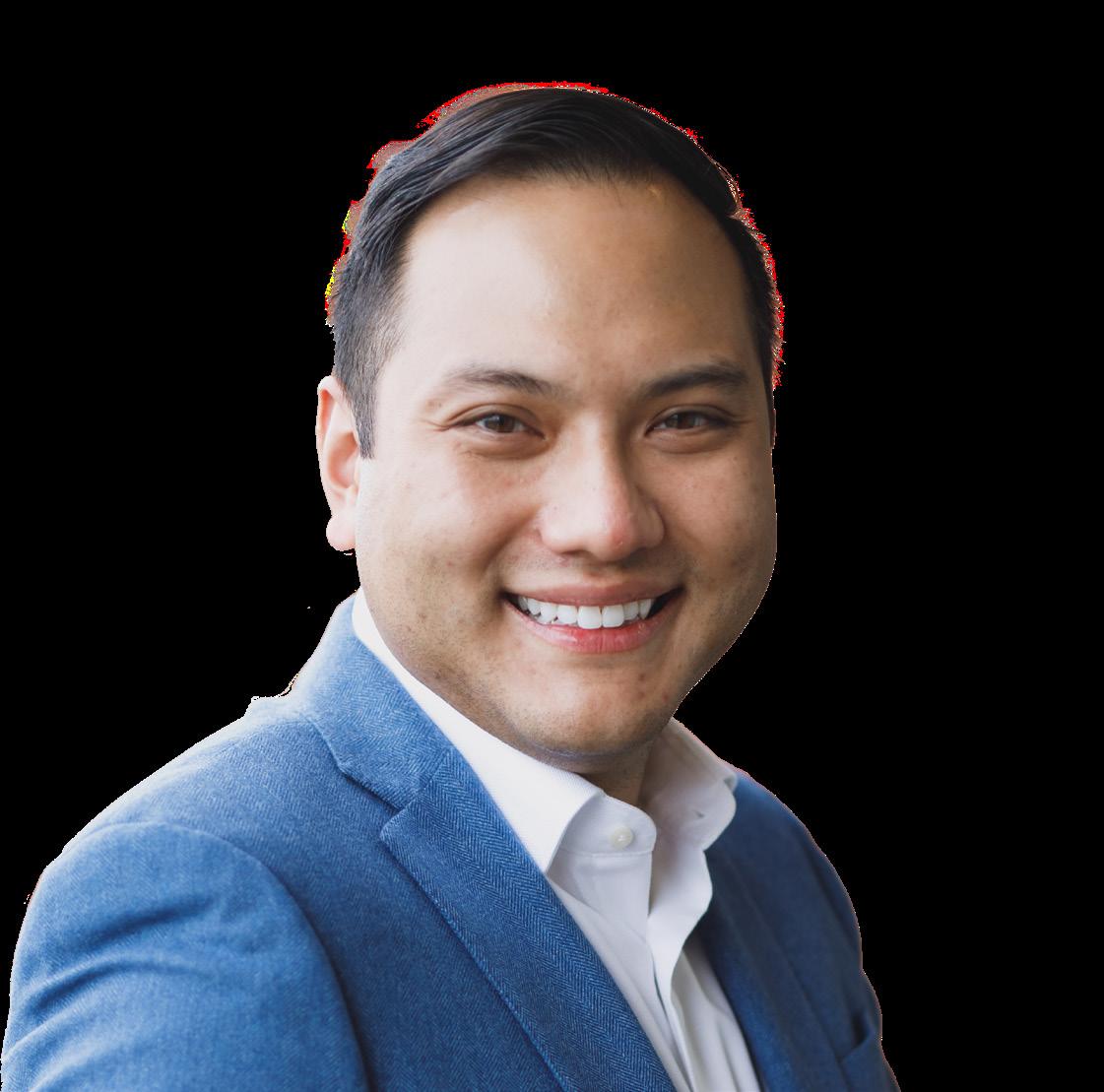

When an accomplished Head-Royce alum meets an enterprising student, a transformative connection is made.
In 2017, when Max Augus (’19) walked into a classroom where the inaugural Adulting 101 program was happening, he had no idea that a life-changing bond was about to be forged. As conceived, the program brought Head-Royce alumni back to campus for a day to discuss their careers with Upper School students. Augus had come to see Justin Chen (’06)—a lauded partner at a leading global investment firm—speak about funding technology ventures. Taking a seat, the then student was excited, and even a little nervous. “From a young age, I had wanted to be an investor,” he says. “Justin immediately struck me as someone very sharp, and I wanted to learn from him.”
Surveying the crowded classroom,
By Mary Jo Bowling, Head-Royce parentChen didn’t know what to expect. After all, he says, “At their age, I knew nothing about investing, private equity, or venture capital.” As he launched into his presentation, the room quickly quieted and came to attention, and he was surprised to see that “the kids seemed to actually grasp what I was saying.” But even in a sea of engaged faces, Augus stood out. “He was a super curious kid who stunned me with his extensive knowledge of investing,” Chen observes. “Like myself at that age, he had a high level of excitement and energy. Today we would call it an ‘entrepreneurial spirit,’ but back when I was in Upper School, we just called it ‘hustle.’” While Chen is grateful for a host of Head-Royce teachers who were “fantastic at their
craft” and classes that “revolved around critical thinking skills,” he credits his HRS extracurricular activities for helping to hone his particular brand of hustle.
It took a lot of that hustle for him to get on campus in the first place. Joining Head-Royce in middle school was a seismic shift for his family. “My parents were both immigrants to the United States,” Chen says. “They knew very little about Head-Royce, but they placed a strong emphasis and value on education, and I convinced them to allow me to apply in 7th grade. It was a very big decision to attend and pay tuition to a private school that was 30 minutes away from my house. My parents sacrificed a lot to give me the opportunity.”
Once enrolled, Chen became deeply
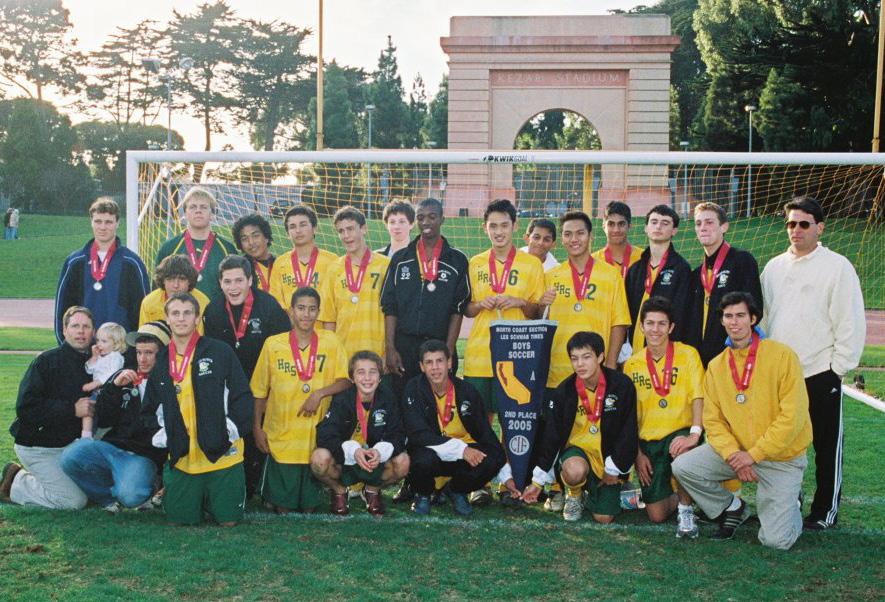
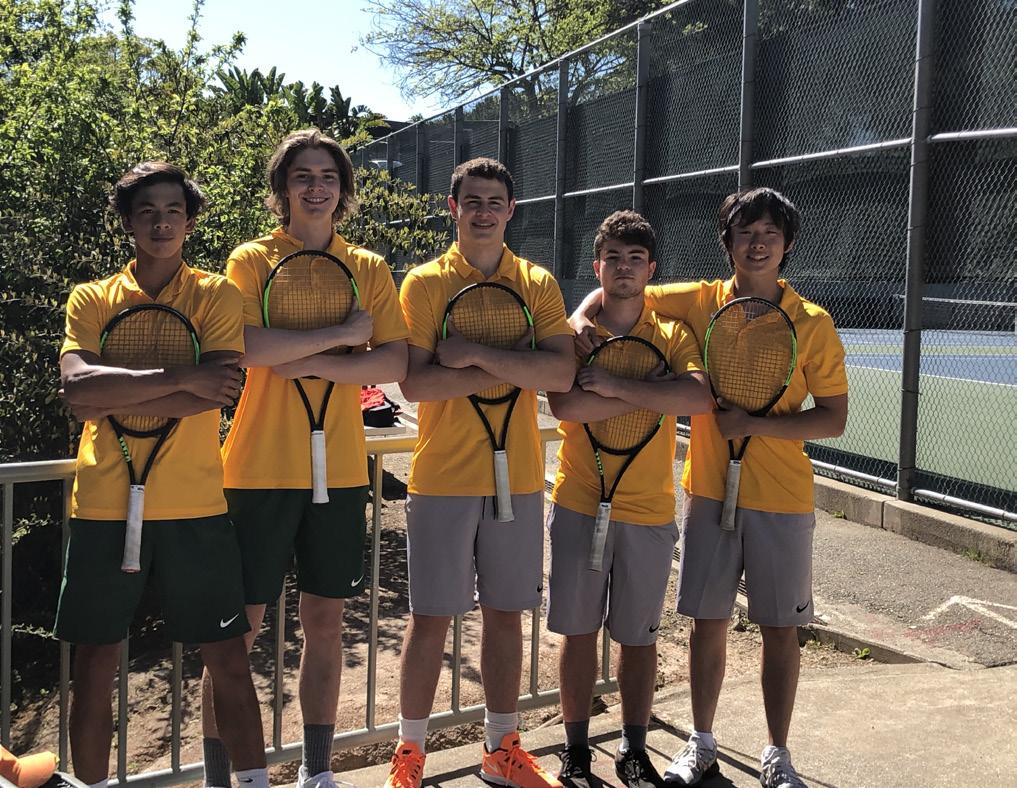
involved with the school, with activities that included serving as class treasurer and playing on the varsity soccer team throughout Upper School. But it was helping stage the prom of 2005 that influenced his career choice. “The junior class is responsible for planning and funding the prom, and I was the class treasurer,” he says. “Thanks to a few
investing was an apprenticeship-based industry,” Augus says. “Despite being nervous, I asked him some questions. Although our conversation was pretty table stakes, we ended up exchanging emails.” The interaction may have seemed minimal at the time, but it sparked a dialogue that continues today.
Augus kept in touch with Chen via
school whose ethos of connection and gratitude bridged generations, allowing one person who succeeded to reach out a hand to another who wanted to follow him. “The community at HeadRoyce, which included my teachers, my friends, and my friends’ parents, was important in my teen years and broadened my perspective,” says
Both men say it’s deeper than that—it’s about a school whose ethos of connection and gratitude bridged generations, allowing one person who succeeded to reach out a hand to another who wanted to follow him.
of my visionary friends, it was a very expensive event, so we really needed to scramble to raise those funds.” The task was accomplished by daily lunchtime sales of pizza, hamburgers, and Chinese food. “We were running our own little business and figuring out how to maximize sales and profit margins,” Chen says. “Andy Spear, our junior government advisor, was an amazing mentor—I will always remember his support outside of the classroom.”
It was a sense of gratitude that brought Chen to Adulting 101 that day in 2017, and he was about to pay it forward. After he finished speaking, Augus stepped up to talk a bit more. “I was driven to approach Justin because I wanted a mentor, and I understood that
email while finishing at Head-Royce and continued after he graduated and went on to University of Pennsylvania. But events came full circle in 2022 when Augus was about to earn a degree in economics. “Max reached out to me for some advice, and by coincidence we were building out our analyst program,” Chen explains. “We included his résumé in the recruiting process, and after a plethora of intensive interviews, my colleagues wanted to hire him.” Today, the two work together and Chen describes Augus as being on a “great trajectory.”
On the face of it, the story may seem like a simple tale of chance networking and a lucky break. But both men say it’s deeper than that—it’s about a
Chen. “I wanted to give back by sharing my experience with other students.”
Augus notes that although he had a desire to enter the finance world as a student, the relationships he forged inspired him and showed him a way forward. “Back then, I didn’t have a specific end goal in mind, but I saw people in the HRS community—like Justin—that I wanted to emulate.”
Today, Chen and Augus continue to check in with each other every few weeks. “Justin is generous with his time and wisdom,” says Augus. “When I first started, he gave me advice that resonated with me: Be humble, consistent, and hungry for knowledge and opportunity.”
Clearly, the hustle continues.

Paul Chapman, Chuck Palley, Kit Ratcliff ’68, Nan Warren ’60 The Anna Head School Steering Committee
We are writing to report on the progress made this past year in the Campaign to Save Anna Head School. The Steering Committee has been meeting frequently as a group, and with other key stakeholders, and we have maintained our advocacy with UC Berkeley.
We were pleased to meet with UC Berkeley Chancellor Carol Christ, Vice Chancellor Marc Fisher, and Campus Architect Wendy Hillis to discuss the importance of saving the Anna Head School legacy this past June. We learned that they intend to move forward with planning for the site this year. The Chancellor acknowledged the importance of saving at least Channing Hall, the oldest and largest
of the landmarked buildings. Alumnae Hall (the Chapel for the Anna Head School) and The Counseling Center have already been restored and are not at risk. UC Berkeley has since hired an architectural planning firm to evaluate several possibilities. The master planning that is now being conducted is evaluating various options, including our proposal that some of the six buildings on the Anna Head School campus be relocated into a mini-campus on the northeastern corner of the site to accommodate the construction of student housing, a strategic objective of the University’s Master Plan and one endorsed by the members of the Berkeley City Council.
In November, we also met with a distinguished group of UC Berkeley alumni to discuss the project, and we received an enthusiastic endorsement.
All agreed this project would be a triple win—for the Anna Head community, the City of Berkeley, and the University. In addition, we are grateful that this month the University is completing the installation of a sturdy, tall security fence to protect the buildings, in advance of the potential construction at People’s Park. As we noted in our report a year ago, all three unrestored buildings are vacant and shuttered, and thus are vulnerable to further damage.
We are anticipating a fuller report from the University on plans for the Anna Head School, and we will keep you updated. In the meantime, please urge friends and colleagues to sign the petition on our website and take every opportunity to advocate for saving the school.
Thank you for your interest in saving Anna Head School!
Joy held a recent book signing at Orinda Books to celebrate the completion of her book Jeanne LeBreton, Tragedy and Courage from France to San Francisco in the Early 1900s, which chronicles the life of her grandmother and her family’s move from France to America near the turn of the century. “She became widowed at twenty-nine and knew that she would need to support herself and her children. She was a stong, resourceful, caring woman, whose thoughts were always for her four daughters and the people of her homeland.”
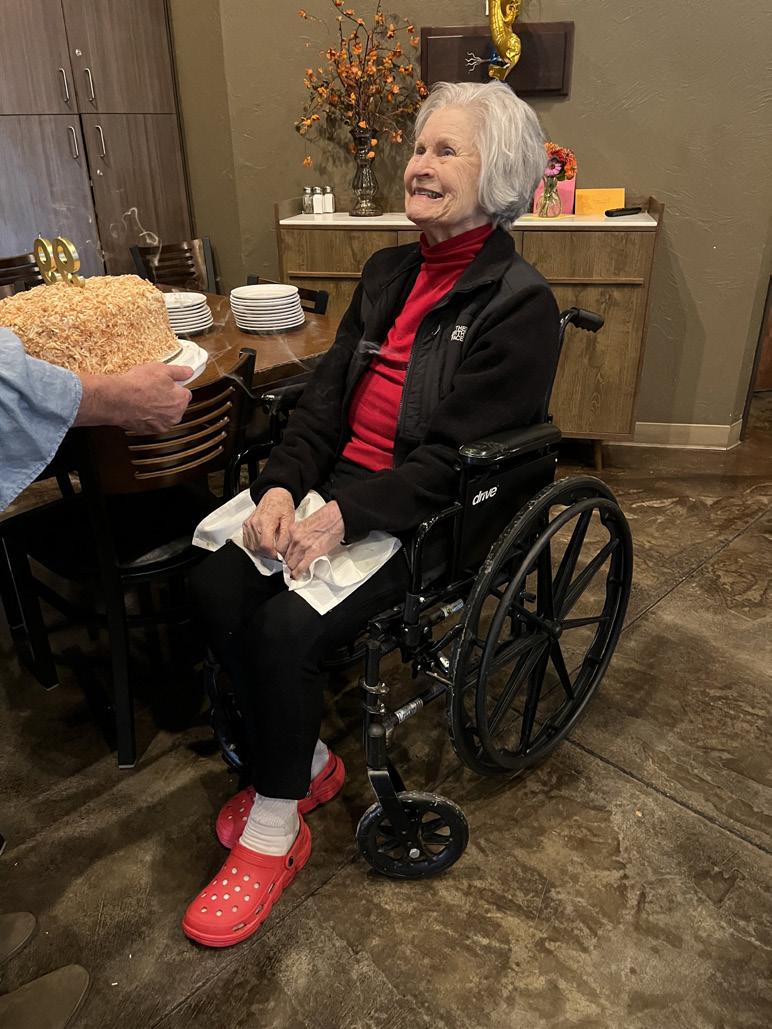
Bindy Wood writes that at 86 years of age, she has four children (the oldest age 65 and the youngest 53 years old), six grandchildren, and one great grandchild.

Stacie shared that her mother and alumna Sheila Seagrave (Scharbach) Lonie ’43 (pictured left) celebrated her 99th birthday on November 1 and is currently residing in Reno, Nevada.
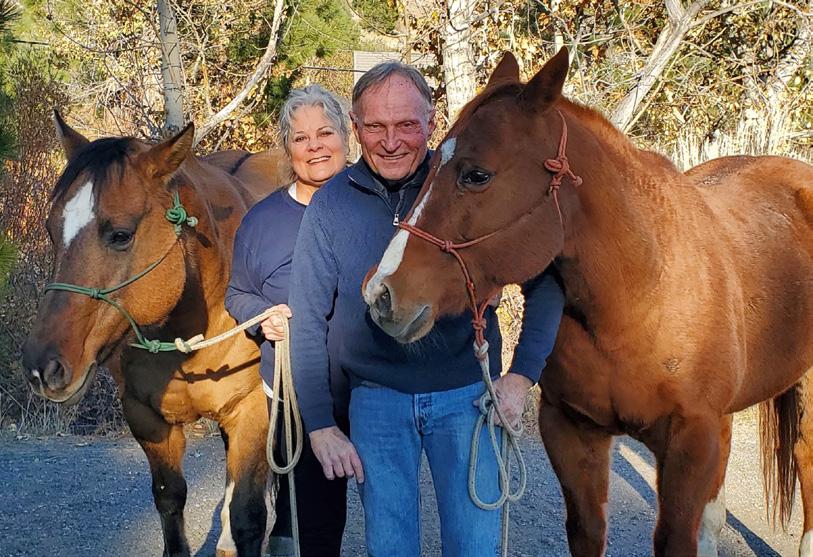

Stacie Scharbach and her husband Gordie at the Reno Rodeo with their horses Chex and Dallas.

Trenton recently began as the Executive Director of the Salvadori Center, a nonprofit providing STEAM education services to under-served schools in New York City.
Brittany welcomed her second child, Emma Rocío Abal, into the world in November 2023. She lives in the D.C. area with her husband and three-year old daughter.
The Class of 1973 celebrated their 50th reunion this past April!
Front left to right: Susan Spitzer Bancroft ’73, Laura Getman ’73, Ann Davaly McCullough ’73, Karen Leaf ’73. Back row left to right: Ingrid Knudson Tillion ’73, Mardi Gamble Paulson ’73.

HOWARD CHASNOFF ’89
Rabbi Chaim Chasnoff has published his first book. The Small Miracle of Happiness is a fun poetry adventure for the spirit now available on Amazon. Howard currently lives in Brooklyn, NY, and would love to hear feedback from the Head-Royce community—drop him a note at HIChasnoff@hotmail.com!

CASEY PEEKS ’10
Casey left Head-Royce after 7th grade and completed high school at Marlborough in Los Angeles. She attended UPenn, received her master’s in education from Harvard and is currently Director of Federal Policy at the Children’s Defense Fund.
RYAN PEEKS ’05
Ryan attended Amherst and received his doctorate in history from University of North Carolina. He is currently a naval historian in the Joint Chief of Staff’s office at the Pentagon. “He and his wife Ann are the proud parents of my first grandchild, Ada Irene, who was born October 16—on my birthday!” Ryan’s mom, Judy Belk shared. That’s quite a birthday present.



Sally Lyman Graber was born in Oakland, California on July 15, 1932 and passed away on July 11, 2022. After graduating from Anna Head School for Girls in 1950, she attended the University of Oregon where she studied English and became an active member
of the Gamma Phi Beta Sorority.
Sally married Don on April 6, 1957, and raised three daughters, Diana, Lindsay, and Lauren. She balanced her commitment to family life with a busy social calendar through involvement in the PTA, Children’s Health Home Auxiliary, and Junior Matrons. Sally volunteered for several fundraiser events such as the Chicken’s Ball and Haunted House where she showcased her artistic talents. She also served as a deaconess at Trinity Presbyterian Church in San Carlos where she and Don were long-standing members.
Sally adored animals—always welcoming household pets—and loved antiquing for treasures, shopping, and traveling. Sally and Don vacationed in many popular places in the states, Bermuda, the U.S. Virgin Islands, and Europe. She especially cherished her many trips to Lake Tahoe, Blue Lake Springs, Palm Desert, and Hawaii with family and friends. Sally loved
playing tennis, watching football, and baseball games while rooting on her favorite teams, hosting and entertaining guests at the house, intently following the stock market, listening to music, and leisure reading, particularly browsing through cookbooks in search of fantastic recipes. She took great pleasure in festive, special occasion family gatherings and delighted in spending time with her children and grandchildren.
Preceded in death by her devoted husband, Don, of 60 years, Sally is survived by her daughters, Diana (Bruce Nyhammer, husband), Lindsay (Bill Tilney, husband), grandchildren, Daniel and Jessica Tilney and Lauren (Richard Sprague, Fiancé), She was spirited and known for her sense of humor, beautiful smile, and laughter and fun-loving nature. As a loving wife, mother, grandmother, sister, cousin, and deeply loyal friend, she will be greatly missed and always in our hearts.
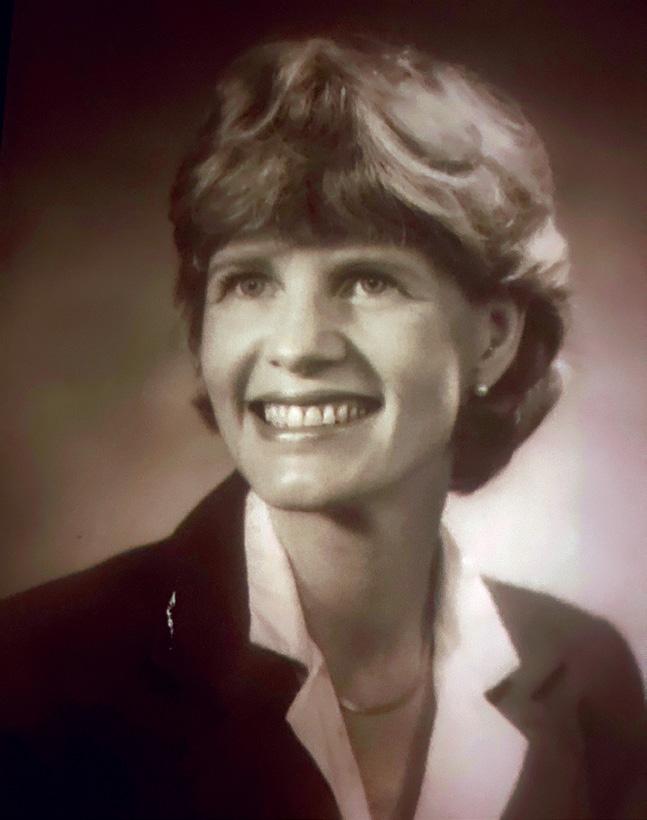
Jane passed away on April 29 in Seattle, Washington, surrounded by friends and family. She was 84 years old.
Jane was born July 9, 1938 in Oakland, California and spent her childhood in Piedmont, California, where she attended Anna Head elementary and Piedmont High School. Jane received a BA from UCLA, where she graduated in 1960. Jane joined the Kappa Alpha Theta sorority and was actively involved in other activities and clubs on campus. Jane met her husband, John, in Southern California, and married in 1961.
The newlyweds initially moved to San Francisco and then enjoyed a brief three years in Newington, Virginia (1968 to 1972) early in their marriage. They would then move back to Northern California and settle in
Palo Alto (1972), where they lived for 35 years. Jane and John welcomed their daughter Nancy into the world in 1962, their son, Tom, in 1964, and their third child, Jeannie, in 1968.
Jane’s beloved John sadly died from Alzheimer’s in 2010 when he was 75 years-old. Seeking adventure, Jane built a house in Reno, Nevada, where she lived for five years. There, she created a close-knit community of friends and found comfort and support in a local church.
A devoted grandmother, Jane chose to move closer to her children Tom and Jeannie, and her grandchildren (Caitlyn, Kristina, Danielle, Thomas, Elizabeth and Helen). With her bright smile and eagerness Jane engaged in outdoor activities, weekly card games, art classes, strength classes, and visits with family and friends. A lover of animals, Jane adopted cats over the years that became wonderful companions.
Full of determination, adventure, and spirit, Jane was an eager life participant. A teacher, AYSO (Girls) Soccer Commissioner, PTA President, and life-long community volunteer, Jane immersed herself with spirit in everything she did. She even co-coached her children’s soccer teams with her husband, John, when her children were young.
A true survivor, Jane was diagnosed with stage three breast cancer when she was 37. She continued to mentor other breast cancer survivors well into her long life for 46 years thereafter. Additionally, Jane created a successful career selling residential
real-estate, while raising three children with her husband.
Eager to explore, Jane continued to travel until just weeks before she died. She enjoyed many trips with her sister, her friends, and family. Jane traveled throughout the U.S., to the Arctic, the Galapagos Islands, Europe, Israel, Africa, Mexico, Russia, Iceland, New Zealand, Alaska, and more. Most recently, she toured Nova Scotia in the Fall of 2022.
Fiercely loyal and gregarious, Jane cared for the people she met in her life and would devote her time and considerable energy to sustaining friendships. Also, faith was important to Jane and she engaged regularly as a Bible study group leader, deacon, and longstanding member of the adult choir
Socially-minded, Jane’s (and John’s) door was always open to sit at the table. Jane enjoyed a competitive card game or ping pong. She also engaged in passions such as photography and keeping record of family history. In fact, Jane’s communication and thoughtful nature were the glue in keeping people together.
Jane McCleave Trautmann lived a long and fulfilled life. Although they are not with us physically, we continue to celebrate her life and John’s life.
Jane was the daughter of Dr. Thomas Crooke McCleave Jr. and Helen Von Weise McCleave, and wife to John Jordan Trautmann (1935-2010). Jane is survived by her sister, Helen “Sue” McCleave Cake, her three children, Nancy Trautmann, Thomas McCleave, and Jeannie Ruckelshaus, and six grandchildren.

(SEPTEMBER 3, 1920–JANUARY 3, 1966)
Maggie was a groundbreaker or perhaps more appropriately, a ‘ceiling-breaker’ being the first woman to win a Pulitzer Prize for Foreign Correspondence, which she was awarded in 1951 for her coverage of the Korean War.
As indicated to the left, she was a student leader and deeply involved during her time at the Anna Head School. She served as President of the Athletic Association, President of Block “H” Society, Girl Reserves, Dramatic Club, Life Saving Corps, Glee Club, Athletic Council, Sophomore Editor of “Nods and Becks,” Swimming Captain, All-Star Hockey, volleyball, basketball, baseball, and swimming teams.
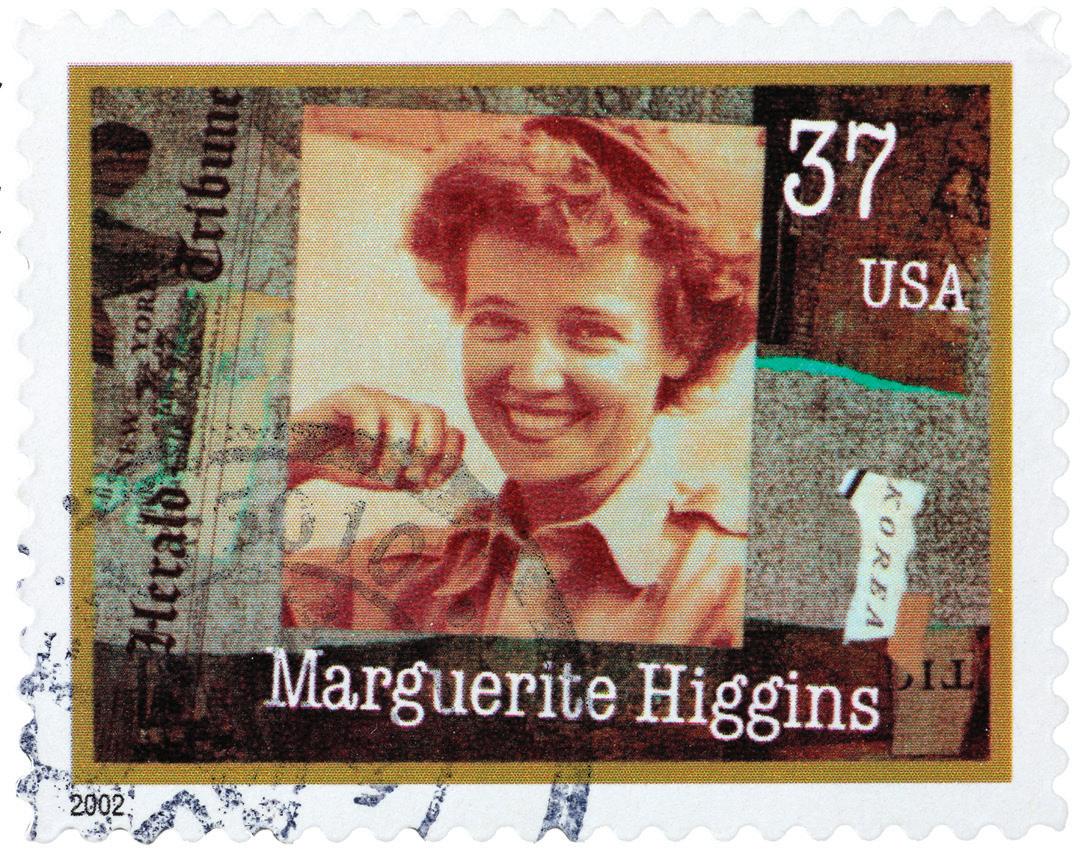



Barbara Gee’s four-decade career at Head-Royce spanned multiple roles— from algebra teacher, K-8 admissions and financial aid officer, to Diversity, Equity, Inclusion, and Belonging Director. In partnership with former Head of School Paul Chapman, Barbara brought about groundbreaking changes in the school community including launching the Heads Up program in collaboration with Oakland Unified School District in 1987, a program that has since provided over 1,000 firstgeneration college-bound students of color—largely from low-income families—with valuable academic enrichment programs. Barbara retired from Head-Royce in 2015.
“Things have changed a lot—and in so many ways—for the better,” Barbara reflects.
“When I started at Head-Royce in…gosh, what year was it? 1974? No! 1973…wow,” she says, “I think I was the only woman of color on the entire faculty. I loved teaching math, but it was definitely nice to see a more diverse, more representative group join the professional community over time.”
Unsurprisingly, her retirement, much like her career, has been robustly

busy and focused on advocacy and community-building. Barbara spends a lot of her time volunteering, particularly with two local museums. An Oakland enthusiast to the core, she is currently a member of the Oakland Museum’s Women’s Board. “I serve in many capacities, dealing particularly with the annual fundraiser, the White Elephant Sale. I’m on the Information Services Committee and manage the registration of members, collection of dues and the meeting attendance roster. I am also on the Customer Service Committee and manage the customer check-in/ reception process during the sales.”
She also offers her time and expertise at the Pardee House Museum, where she especially likes helping orchestrate tea parties amongst the art and artifacts collected by a family whose Oakland roots go back to the
Gold Rush and whose legacy includes significant conservation work and two generations of Oakland mayors (who respectively went on to state assembly and governorship of California).
Barbara also became a grandparent recently—something she confirms brings with it all the fun and excitement of raising your own children without any of the stressors.
While making the most of life post-retirement, Barbara does enjoy staying connected to the Head-Royce community—along with being a diehard attendee of the annual holiday program, she continues to appreciate the evolving character of the school community. “Obviously, it’s quite a bit bigger than it was in the 1970s. But I also think it’s more reflective of Oakland’s overall population, and it’s gratifying to see that.”

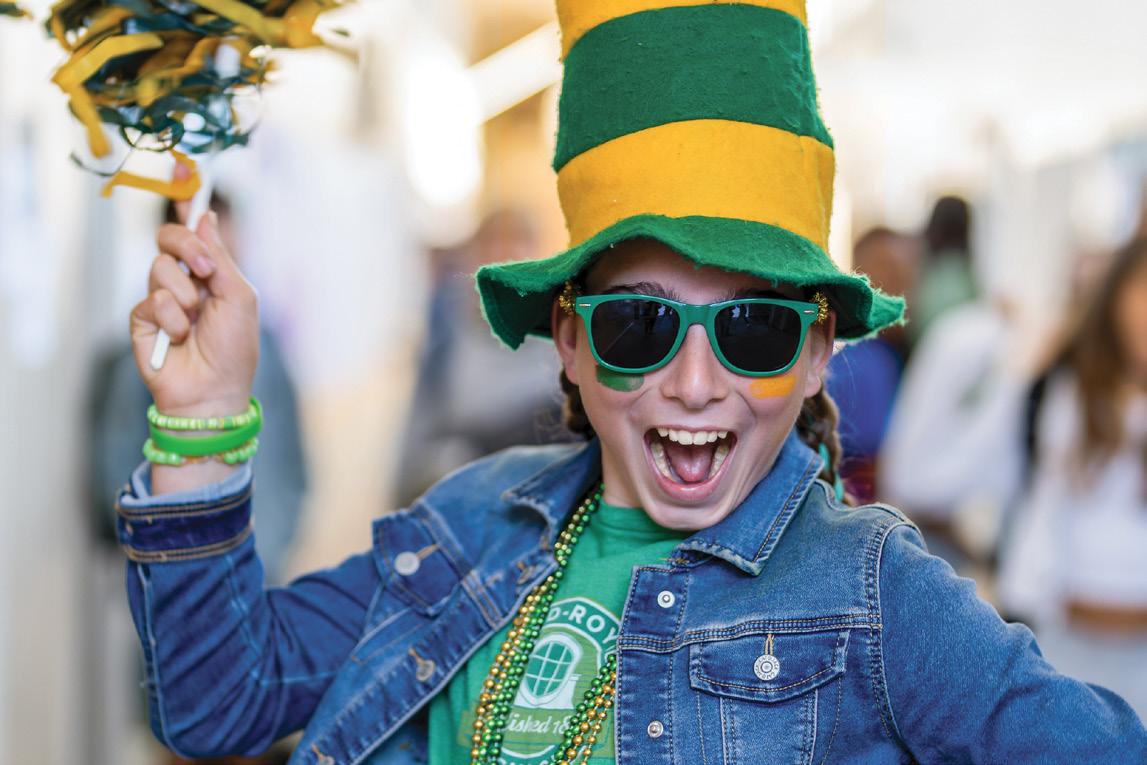
Because of you, 2023 was an incredible year at Head-Royce. The impact of your time, talent, and treasure continues to leave its mark on Head-Royce students of yesterday, today, and tomorrow—thank you!
SEE WHAT YOU MADE POSSIBLE IN OUR ANNUAL 2023 IMPACT REPORT

Have you caught a Jayhawk doing something inspirational? Tell us about it!
